Alan Turing: On Computable Numbers, with an Application to the Entscheidungsproblem
description: paper by Alan Turing, foundational to theoretical computer science
53 results
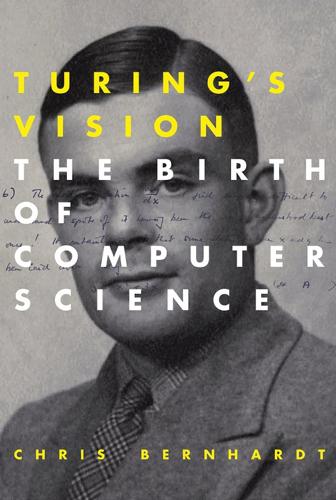
Turing's Vision: The Birth of Computer Science
by
Chris Bernhardt
Published 12 May 2016
The answer is that he wrote a remarkable paper in 1936, when he was just twenty four years old. This paper is Turing’s most important intellectual contribution. However, this paper and its groundbreaking ideas are not widely known. This book is about that paper. The paper has the rather uninviting title, On Computable Numbers, with an Application to the Entscheidungsproblem. But don’t be discouraged by the title, because it contains a wealth of elegant and powerful results. It also contains some remarkably beautiful proofs. Turing wants to show that a leading mathematician’s view of mathematics is wrong. To do this he needs to study computation: What exactly is computation?
…
This idea is then extended to Turing machines: there are some Turing machines that accept their encodings and some that do not, but there is no Turing machine that can distinguish these two classes. This, in turn, leads to the the proofs that certain decision problems are undecidable. In particular, we prove that the halting problem and the acceptance problem are both undecidable. Chapter 8 The title of Turing’s paper is On Computable Numbers, with an Application to the Entscheidungsproblem. The connection to the Entscheidungsproblem has now been explained, but computable numbers have not. In this chapter we explain what these numbers are and the basic result concerning them. The chapter starts with Cantor’s idea of cardinality. We look at some basic, but surprising facts, about infinite cardinal numbers.
…
The only conclusion is that the list of computable numbers is not something that can be constructed by a computer. If the list could be constructed by a computer, then b would be computable and we would have a contradiction. If it is not possible to construct the list by a computer, then there is no contradiction, so that must be the case. The title of Turing’s paper is “On Computable Numbers, with An application to the Entscheidungsproblem.” This title should now make sense. Turing wanted to show that Hilbert’s view of the Entscheidungsproblem was not correct. To recap: He first needed to give a definition of an effective procedure, or algorithm. This he did through his definition of what we now call Turing machines.

Turing's Cathedral
by
George Dyson
Published 6 Mar 2012
Even in a perfectly deterministic universe, there is no consistent method to predict the ending in advance. To an observer in our universe, the digital universe appears to be speeding up. To an observer in the digital universe, our universe appears to be slowing down. Universal codes and universal machines, introduced by Alan Turing in his “On Computable Numbers, with an Application to the Entscheidungsproblem” of 1936, have prospered to such an extent that Turing’s underlying interest in the “decision problem” is easily overlooked. In answering the Entscheidungsproblem, Turing proved that there is no systematic way to tell, by looking at a code, what that code will do.
…
“There is mighty little room for putting things in one’s cabin, but nothing else that worries me,” he reported to his mother on September 28. “The mass of canaille with which one is herded can easily be ignored.”2 Turing’s arrival in Princeton was followed, five days later, by the proofs of his “On Computable Numbers, with an Application to the Entscheidungsproblem.” These thirty-five pages would lead the way from logic to machines. Alan Mathison Turing was born at Warrington Lodge, London, on June 23, 1912, to Julius Mathison Turing, who worked for the Indian Civil Service, and Ethel Sara Turing (née Stoney), whose family included George Johnstone Stoney, who named the electron, in advance of its 1894 discovery, in 1874.
…
After a full year of work, Turing gave Newman a draft of his paper in April of 1936. “Max’s first sight of Alan’s masterpiece must have been a breathtaking experience, and from this day forth Alan became one of Max’s principle protégés,” says William Newman, Max’s son. Max Newman lobbied for the publication of “On Computable Numbers, with an Application to the Entscheidungsproblem,” in the Proceedings of the London Mathematical Society, and arranged for Turing to go to Princeton to work with Alonzo Church. “This makes it all the more important that he should come into contact as soon as possible with the leading workers on this line, so that he should not develop into a confirmed solitary,” Newman wrote to Church.15 Turing arrived in Princeton carrying his sextant, and stretching his resources to survive on his King’s College fellowship (of £300) for the year.

The Man From the Future: The Visionary Life of John Von Neumann
by
Ananyo Bhattacharya
Published 6 Oct 2021
The pair almost certainly met in person for the first time. They would renew their acquaintance in September the following year, when Turing arrived in Princeton as a visiting fellow. He had asked von Neumann to write him a letter of recommendation. Five days later, working in an office in Fine Hall, Turing received the proofs for ‘On Computable Numbers, with an Application to the Entscheidungsproblem’, the paper that laid the theoretical foundations of modern computer science.7 He was disappointed by its reception in Princeton. But one person did notice it. ‘Turing’s office was right near von Neumann’s, and von Neumann was very interested in that kind of thing,’ says Herman Goldstine, who would work closely with von Neumann on computers.
…
Zund, ‘George David Birkhoff and John von Neumann: A Question of Priority and the Ergodic Theorems, 1931–1932’, Historia Mathematica, 29 (2002), pp. 138–56. 6. Garrett Birkhoff, 1958, ‘Von Neumann and Lattice Theory’, Bulletin of the American Mathematical Society, 64 (1958), pp. 50–56. 7. Alan Turing, ‘On Computable Numbers, with an Application to the Entscheidungsproblem’, published in two parts 1936–7, Proceedings of the London Mathematical Society, 42(1) (1937), pp. 230–65. 8. Interview with Herman Goldstine conducted by Nancy Stern, 1980, https://conservancy.umn.edu/bitstream/handle/11299/107333/oh018hhg.pdf?sequence=1&isAllowed=y. 9.
…
C. 214 McNamara, Robert 222 Macrae, Norman 103 Manchester, University of 138, 142, 269 Mandelbrot, Benoît 277–8, 282 Manhattan Project xii–xiii, 80–96, 85 assembly of the first implosion device 87–8 cost 80 decision to use bomb 93 detonator 86–7 and ENIAC 109 Explosive Division 86 explosive lenses 84, 85, 86–7 Fat Man 89, 92 Fat Man dropped 95–6 Feynman recruited 82 Groves appointed to lead 80–1 gun projects 81–2, 83 implosion bomb design 82, 83–4, 85, 85–8 initiator 87–8, 90, 91 Jumbo 88–9 Little Boy 82, 865, 88, 92 Little Boy dropped 94–5, 96 location 81 the Martians 1, 9 Oppenheimer appointed to head laboratory 81 origins 80 personnel 80 secrecy lifted 132–3 small-scale test 88 Soviet spies in 92 tamper 87, 91 Target Committee 94 testing approach 84 Theoretical Physics Division 99 Thin Man 82, 85 Trinity test 92, 209 VN joins 82–4 VNs first contribution 83 VNs visits to Los Alamos 84–5, 85 VNs work 82–8 MANIAC I 137, 139 Many Worlds interpretation, the 57–8 Margolus, Norman 245 Mars, terraforming 264 Marxism 14 Mathematical Association of America 77 Mathematical Foundations of Quantum Mechanics (von NeumanNeumann) 41, 43–9, 50, 62 mathematics xii axiomatic method 16, 19–20, 24, 144, 199 consistency unprovable 116–17 debate on the limits of 16, 22 Euclid’s parallel postulate 17–18, 17 foundational crisis 15–25, 111–113, 113–115 Gödel’s first incompleteness theorem 112–167 Gödel’s second incompleteness theorem 116–7 hyperbolic geometry 18, 18 not complete 112–13 set theory 20–5, 26–8, 157 type theory 26–7 VNs contributions to the foundational crisis 22–5 matrix algebra 32 matrix mechanics 30–33, 32, 35, 36–38, 39, 46 Matsumoto, Shigeko 95–6 Mauchly, John W. 106–8, 123, 130, 308–9n53 EDVAC patent dispute 125–6, 127–8 The Use of High Speed Vacuum Tubes for Calculating 108 MAUD report, the 80, 301n23 Maxwell, James Clerk 33 Mayer, Maria Goeppert 137 Maynard Smith, John 180 measurement problem, quantum mechanics 43–5, 57–8, 59, 296n43 Meitner, Lise 78, 301n23 Merkle, Ralph 264 Mermin, David 46, 50, 54 Metropolis, Nicholas 109, 135–6, 136, 137, 139 Michigan, University of 105, 181, 258 Logic of Computers Group 243–4, 258, 265 Milgrom, Paul 177–8 military worth 188, 189, 191 minimax theorem proof 143–8, 154, 169, 176–7, 192 Minority Report (film) 231 Minsky, Marvin 274, 276 Minta/Model gimnázium 7–8, 9 Mises, Ludwig von 152–3 Misner, Charles 57 MIT 107, 128, 130, 175, 185, 242, 244–5, 274 Modernism 154–165, 291n12 molecular biology 62, 230, 268 Mondrian, Piet 154 Monte Carlo 74–5 Monte Carlo bomb simulations 133–8 Moon, colonization of 225–6, 264–8, 268 Moore, Edward F. 263 Moore, Gordon 140 Moore School of Electrical Engineering, University of Pennsylvania 101, 1054–11, 106, 122, 126, 128, 308106 Moore’s law 140 Morgenstern, Oskar xiii, 152–9, 175, 199 contribution to Theory of Games 158–9, 160–1, 165–6169, 171, 173 disillusionment with economics 153–4, 157, 158–9 doctoral thesis 153–4 education 152–3 habilitation thesis 153–4 joins Princeton 155–6 leaves Austria 154–5 marriage 156 travels 153 and VN 154, 155, 156–9 Moskito Island 244, 245, 245–6 multi-player (n-person) games 169–75, 176 multi-player games 169, 176 Munich Agreement 76 Murdoch, Iris 145 Musil, Robert 32 Nagasaki, bombing of 95–6 nanotechnology 268–9 NASA, Santa Clara workshop 264, 265 Nasar, Sylvia 198, 202 Nash, John 151, 177–8, 179, 197–203, 200, 203, 204, 207–8 A Beautiful Mind characterization 198 ‘The Bargaining Problem’ 199, 204 character 198–9 conception of game theory 203 contribution to game theory 199–203 and Einstein 199–200 non-cooperative Pair experiment 207–8 racism 198 relationship with RAND 202 and Shapley 197–8 VNs rejection 199–203 Nash equilibria 201–3 National Academy of Sciences 84 National Cash Register Accounting Machine 79 National Defence Research Committee 77, 79 National Socialism 5 natural selection 180–1, 253–4, 257 nature, randomness in 248, 249 Naturwissenschaften (journal) 52 Nautical Almanac Office, Bath 79 Nazi Germany 93, 78, 203 annexation of Austria 117, 154–5 annexation of the Sudetenland 76 atom bomb project 96–7 decline of science in 63–4 Hitler appointed Chancellor 62–3 resistance movement 51 totalitarian dictatorship 63 Neddermeyer, Seth 82, 83–4 neoliberalism 152 Neumann, John von xi–xiv, 66, 71 ‘A Model of General Economic Equilibrium’ 151 acquaintance with Turing 70, 103 appearance 71–2 applies for commission 73–4 appointed to AEC 212 appointed to BRL’s scientific advisory board 77 approach to giving seminars 41 approach to ordinals 23–4, 24 approach to programming 134–5 arrival in America 50, 65–7 background 1–3 and Barricelli 2547 becomes American citizen 72 begins working for IBM 126 Berlin years 39–41, 40 birth xii, 1 birth of daughter 71 and brain structure 227–8 burial 280 cancer 224, 279–80 cancer diagnosis 274–5 cars 665–76, 283 character 14, 77, 210–11, 281–3 chemical engineering degree 28 chemical engineering studies 25–6 child custody arrangements 141–2 childhood mathematical ability 3–4, 289n6 The Computer and the Brain 275–6 contribution to computing 122–7, 129–130, 131, 139–140, 308n48 contributions to the foundational crisis 165, 22–5, 24, 26–7 contributions to quantum theory 30, 36, 37–9, 41, 43–6, 48–9, 50, 54, 60–1, 61 conversion to Catholicism 7 cynical side 281–2 death xiv, 280 and decision to use bomb 93 defence of Oppenheimer 211–12 Defense in Atomic War 221 divorce from Mariette 75 doctoral exam 28 doctoral thesis 26–8 driving skill, lack of 665–76 economic model 148–9, 151–2 education 3, 4–5, 7–10, 11–13, 14 EDVAC report 121–7 EDVAC patent dispute 125–6, 127–8 and ENIAC 105–6, 109–111, existential threats speculations 283–4 explosives and ballistics work 77, 83 fame 105 family background 2 fascination with war strategy 191–2 first marriage 50, 65 First Draft of a Report on the EDVAC 111, 121–7 first paper 12–13 Fuchs-von Neumann patent 99–100, 109 and Gödel 111, 113, 116–18 graduates from high school 25 health deteriorates 235 and Hilbert 27–8 home life 72, 77 hospitalization 276–7 IAS computer project 127, 128–30, 138–9, 193 and ICBM threat 216, 217–18 implosion bomb design 84, 85, 865–8 impossibility proof 48–9, 50–4 interest in the biological sciences 226–7 interests in computing 79–80, 103–45 invited to Princeton 49–50 joins Manhattan Project 82–4 joins navy 79 and Klára’s return to Hungary 76–7 language skill 3 last book 275 last days 277–80 leaves IAS 277 life in Budapest xi, 1–9, 5, 7, 14 Manhattan Project work 82–8, 85 Marina’s marriage 278–9 Mariette leaves 66, 67, 72 marries Klára 76 Mathematical Foundations of Quantum Mechanics 41, 43–9, 50, 62 mathematical powers 147 and the measurement problem 43–5, 57–8, 296n43 Medal of Freedom 277, 277 Medal for Merit 83 meets Klára 74–5 and Morgenstern 154, 155, 156–9 minimax theorem proof 143–8, 169, 176–7, 192 misanthropy 203 Monte Carlo bomb simulations 133–8 and Nash 199–203 nervous energy 77 on nuclear deterrence 221 obsessions in, 1948 192 obsessive-compulsive disorder 77 ‘On Certain Equations of Economics and a Generalization of Brouwer’s Fixed-Point Theorem’ 148 open-mindedness about quantum mechanics 59–60 operator theory 61–2 opposition to Marxism 14 and origin of atom bomb 78 parties 76 plans to leave IAS 277–8 on power of the atom 102 powers 147 premonitions of war 70–1 at Princeton 65–72, 676, 76 Princeton contract extended 63 proof of the ergodic hypothesis 69 reaction to Bohm 54 relationship with Klára 77, 97 resolves Russell’s paradox 26–8 return to Catholicism 279, 280 road trip with Marina 97–8, 98 Rockefeller Foundation grant 29, 39 salary 65–6, 68 self-reproducing automata 229–30, 232–7, 233, 236 siblings 2, 290n13 Silliman Memorial Lectures 274, 275 talents spotted 11 target votes 94 theory of automata 228–32 Theory of Self-reproducing Automata 226, 231, 236, 237 Trinity test 91–2 Turing’s influence 121–2, 301n22 unification of quantum mechanics 30, 36, 37–9, 43–9 unique gift 12–13 on universal Turing machine 120 at University of Budapest 11–13 at University of Berlin 12, 39–41 view of the Cold War 208–9 vision of future technical possibilities 102–3 visits Europe, 1949 203 visits to Los Alamos 84–5, 85 war work 78–80 work for RAND 190–1, 192–4, 195–6 wartime visit to Britain 79–80 Neumann, Klára Dán von 74, 235 on computers 121 death 280 death of father 77 depression 77, 1387 ENIAC work 132–3, 135–8 family background 75 IAS computer project 129 insecurity 132 marriage to Eckart 280 marries VN 76 meets VN 74–5 Monte Carlo bomb simulations 133–8 parties 76 relationship with VN 77, 97 return to BRL 136 return to Hungary 76–7 second marriage and divorce 75–6 and Theory of Games 158 and VNs last days 278 and VNs vision of future technical possibilities 102–3 Neumann, Lili von 14 Neumann, Margaret von 2 Neumann, Mariette Kövesi von 66, 67, 300n2 arrival in America 50, 65–7 child custody arrangements 141 divorce 75 marriage to VN 50, 65 university studies 65 leaves VN 66, 72 Neumann, Marina, von birth 71 custody arrangements 141–2 on home life 72 marriage 278–9 road trip with VN 97–8, 98 on VNs marriage to Klára 76 and VNs return to Catholicism 279 Neumann, Max von 2, 3, 4, 6–7, 13, 14, 25–6 Neumann, Michael 14, 290n13 neural networks, artificial 226, 246 neuro-anatomy 228 neurons 122, 123, 125, 2298, 273, 275 artificial 125, 226, 276 neutrons, Monte Carlo bomb simulations 133–5, 136–7 New York 50, 188–9, 220 New York Times 110, 127, 135, 175, 177–8, 209 New Zealand 60, 177 Newman, James 219–20 Newman, Max 119 Nobel Prize 8, 60, 61, 63, 177, 178, 197 Noether, Emmy 51, 63–4 non-cooperative game theory 176, 177–8, 201, 203, 204–8 non-zero-sum games 172–5, 176–7, 204–8 Nordheim, Lothar 36, 41 Notestein, Frank W. 132 nuclear deterrence 183, 212–16, 218–21, 223–4 nuclear disarmament 209, 320n63 nuclear fission 77–8, 80, 86, 87, 91, 134–5, 136–7 Nuclear Operations Joint Publication 3–72 223–4 nuclear strategy counterforce deterrence 212–16, 218–21 doctrine of preventive war 208–10 and game theory 182, 204–9, 206, 212–16, 218–21 Massive Retaliation doctrine 210, 215, 221 preventive war 208–10 restraint 221–2 nuclear weapons research programme see Manhattan Project Office of Scientific Research and Development 77 ‘On Certain Equations of Economics and a Generalization of Brouwer’s Fixed-Point Theorem’ (von Neumann) 148 ‘On Computable Numbers, with an Application to the Entscheidungsproblem’ (Turing) 70, 121 On Thermonuclear War (Kahn) 219–20 Oncken, Wilhelm 4 Operation Crossroads 98 operations research 188, 189 operator theory 61–2 Oppenheimer, Robert AEC hearing 211–12 appointed to head Manhattan Project laboratory 81 appoints Kistiakowsky 84 and Bohm 53 communist links 81 innocence 212 ‘Now I am become Death the destroyer of worlds’ 92 and origin of atom bomb 78 recruits VN 82–3 small-scale test 88 stripped of security clearance 81, 212 supports implosion bomb design 82 and Target Committee 94 Trinity test 92 ordinality 23–4, 24 orthogonal polynomials 12–13 Ortvay, Rudolf 6–7, 70–1, 78 Ostrom, Elinor 178, 181 Oxford, University of 245, 269 Pais, Abraham 46 Papert, Seymour 276 Peierls, Rudolf 80, 99 Pennsylvania, University of, Moore School of Electrical Engineering 101, 105–11, 106, 122, 126, 128, 308 Penrose, Lionel 262 Penrose, Roger 262 Pentagon Papers 222 Péter, Rózsa 147 Petersen, Aage 57 Physics Today (journal) 58 Pinochet, Augusto 152 Piskunov, Max 253 Pitts, Walter 122, 123, 226 Planck, Max 29 Plesset, Ernst 216–18 plutonium xiii, 81–2, 84, 85, 86, 302n33 poker 148, 166–8, 168, 302n32 Poland, Nazi invasion of 77, 80 polonium 88, 90, 91 Pólya, George 11–12 Pomerene, James 139 Potsdam conference, 1945 89–90, 92 Pravda (Soviet newspaper) 183 Preliminary Design of an Experimental World-Circling Spaceship (RAND Corporation) 187 preventive war 208–10 Price, George 180 Price Equation, the 180 Princeton University 57, 155, 198 economics department 175 Einstein at 68, 69 extends VNs contract 63 Fine Hall 68 Institute for Advanced Study 68–72, 117–18, 127, 156, 211, 245 invites VN 49–50 Morgenstern joins 155–6 Office of Population Research 132 Turing at 70 VN at 65–6872, 66, 76 VN leaves 277–8 Princeton University Press 158 Prisoner’s Dilemma 181, 204–8, 206, 212, 272 program-controlled computers 119–20 Project Hippo 135 Project PX see ENIAC Project PY 110 Project Y see Manhattan Project: prospect theory 178 protein structure 227 purposive behaviour 227–8 Pythagoras’ theorem 16, 38 quantum computers 58 quantum entanglement 45, 55–7 quantum mechanics xii, 294n19 applications 58–9 boundary with classical physics 45 Copenhagen interpretation 46, 53–5, 54, 58–60, 296n43 critique of the Copenhagen interpretation 46–8 Dirac’s attempt to unify 36–7 dispersive ensembles 48–9 the EPR paradox 55–7 the Heisenberg cut 45 Heisenberg’s formulation 29–33, 32, 34, 36, 38, 46, 296n43 Hilbert and 36 lack of agreement on interpretation 42 ‘Many Worlds’ interpretation 57–8 matrix mechanics 30–33, 32, 35, 36–38, 39, 4630–3, 32, 35, 38 measurement problem 43–5, 57–8, 59, 296n43 nonlocality 55 origins of 29–30 relational interpretation 298n63 Schrödinger’s formulation 30, 33–6, 36, 38 and self-reproducing automata 243–4 and special relativity 55 uncertainty principle 33, 69, 294n11 utility 58–9 VNs impossibility proof 48–9,50–4 VNs unification of 30, 36, 37–9, 43–9 wave function collapse 43–4, 45, 46–8, 53, 53–4, 59 wave mechanics 30, 33–6 wave–particle duality 33–4, 42–3, 52–3 radiation implosion 99–100 RAND Corporation 182, 183–95 analysis of systems 189 break with Douglas Aircraft 187 Computer Science department 193 and computers 192–3 corporate ethos 187 duels studies 194–7 Economics Division 190, 192, 213 Evaluation of Military Worth 189 first report 187 focus 187 foundation 186–7 founding father 183–6 and game theory 188–9, 193–7, 204–9, 212–16, 218–21 and ICBM threat 216–18 JOHNNIAC 193, 194 little wars strategy 222–4 manifesto 188–9 Mathematics Division 213–16 Military Worth section 189, 195 name 186 Nash’s relationship with 202 non-cooperative Pair experiment 206–8 notoriety 183 Physics Division 216, 218–19 Selection and Use of Strategic Bases 214–15 Social Science division 190, 195, 213 VNs work for 190–1, 192–4, 195–6 Randell, Brian 103 randomness, power of 133–4 Rapoch, Andor 75 Rátz, László 11 Raymond, Arthur 186 Reagan, Ronald 152, 267 Real school 8–9, 9 Reed, Harry 106 RepRap 225–6, 235 REPRO starship 264 Reviews of Modern Physics (journal) 54 Richtmyer, Robert 133–54, 135 Riemann, Bernhard 18–19 Riesz, Frigyes 38–9 Rimini, Alberto 59 Robertson, Angela 676 Robertson, Howard Percy (“Bob”) 676 Rockefeller Foundation 29, 39, 50, 68, 153, 220 Romania 13–14 Rosenblatt, Frank 276 Rosenfeld, Léon 78 Roth, Alvin 178 Rovelli, Carlo 62, 298n63 Royal Air Force 188 Royal Navy 79–80 Russell, Bertrand 20–2, 26–7, 210, 219, 320n63 Russell’s paradox 21–2, 26–8 Rust, Bernhard 64 saddle points 146, 147 Samuelson, Paul 175 Santa Barbara, California 98 Santa Clara workshop, NASA 264, 265 Santa Fe 97 Savage, Leonard 146–7 Schelling, Thomas 178, 220–1, 224, 270, 271, 272 Schmidt, Erhard 26 Schrödinger, Erwin 30, 33–6, 42, 43, 45 critique of the Copenhagen interpretation 46–8 What Is Life?
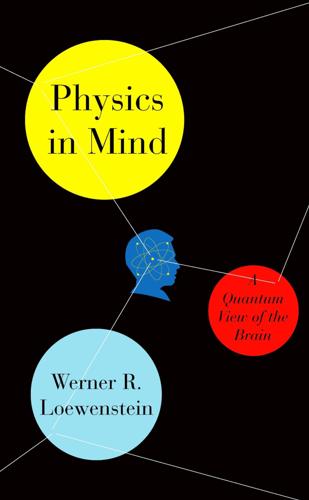
Physics in Mind: A Quantum View of the Brain
by
Werner Loewenstein
Published 29 Jan 2013
R. 1980. Gödel, Escher, Bach: An Eternal Braid. New York: Vintage Books, Random House. Trakhtenbrot, B. A. 1963. Algorithms and Automatic Computing Machines. Boston: D.C. Heath & Co. Turing, A. 1936. On computable numbers, with an application to the Entscheidungsproblem. Proceedings of the London Mathematical Society (2nd Series) 42:230–265. Turing, A. 1937. On computable numbers, with an application to the Entscheidungsproblem: A correction. Proceedings of the London Mathematical Society 43:544–546. Rendering the World by Computer Deutsch, D. 1985. Quantum theory, the Church-Turing principle and the universal quantum computer.
…
Gödel, K. 1931. On formally undecidable propositions of Principia Mathematica and related systems I. Monatsschrift für Mathematik und Physik 38:131–198. Prigogine, I. 1980. From Being to Becoming: Time and Complexity in Physical Sciences. San Francisco: Freeman. Turing, A. M. 1936/1937. On computable numbers, with an application to the entscheidungsproblem. Proceedings of the London Mathematical Society Series 2 42:230–265 and 43:544–546. A Note about Reality Carroll, Lewis. (1871) 1982. Through the Looking Glass and What Alice Found There, Chapter VII. New York: Avenel Books. 14. Information Processing in the Brain Cell Organization in the Brain Braak, H. 1976.

Algorithms to Live By: The Computer Science of Human Decisions
by
Brian Christian
and
Tom Griffiths
Published 4 Apr 2016
“a clever man would put the poison into his own goblet”: The Princess Bride, screenplay by William Goldman; 20th Century Fox, 1987. “anticipating the anticipations of others”: Attributed to Keynes in Gregory Bergman, Isms, Adams Media, 2006. it was the halting problem that inspired Turing: Alan Turing considers the halting problem and proposes the Turing machine in “On Computable Numbers, with an Application to the Entscheidungsproblem” and “On Computable Numbers, with an Application to the Entscheidungsproblem. A Correction.” “poker players call it ‘leveling’”: Dan Smith, personal interview, September 11, 2014. “You don’t have deuce–seven”: This took place at the “Full Tilt Poker Durrrr Million Dollar Challenge,” held at Les Ambassadeurs Club in London, November 17–19, 2009, and was televised on Sky Sports.
…
Journal of Pragmatics 70 (2014): 152–164. Tracy, Brian. Eat That Frog! 21 Great Ways to Stop Procrastinating and Get More Done in Less Time. Oakland, CA: Berrett-Koehler, 2007. Turing, Alan M. “On Computable Numbers, with an Application to the Entscheidungsproblem.” Read November 12, 1936. Proceedings of the London Mathematical Society s2-42, no. 1 (1937): 230–265. ______. “On Computable Numbers, with an Application to the Entscheidungsproblem: A Correction.” Proceedings of the London Mathematical Society s2-43, no. 1 (1938): 544–546. Tversky, Amos, and Ward Edwards. “Information Versus Reward in Binary Choices.”
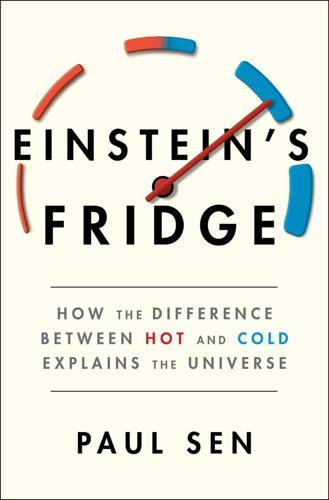
Einstein's Fridge: How the Difference Between Hot and Cold Explains the Universe
by
Paul Sen
Published 16 Mar 2021
He graduated three years later with a first-class degree and was chosen to be a “fellow” of the college, which meant an annual stipend of £300 (worth around £11,000 [$14,000] today) and the freedom to pursue his many mathematical interests. During this time Turing wrote the paper that, along with his wartime work as a code breaker, is the achievement he’s best known for. Published in 1936, the paper has the daunting title “On Computable Numbers, with an Application to the Entscheidungsproblem.” The Entscheidungsproblem is a mathematical challenge that had been stated in its modern form in 1928 by David Hilbert, Emmy Noether’s mentor at the University of Göttingen. In simple terms, the problem asks if there is an automatic way of determining if any mathematical statement is true.
…
About a Microscope: See above. Natural Wonders Every Child Should Know: A book by Edwin Tenney Brewster. “How they find out when”: From above. “Hockey, or Watching the Daisies Grow”: Sara Turing drew the picture and sent it to the matron at Turing’s school in 1923. “On Computable Numbers”: “On Computable Numbers, with an Application to the Entscheidungsproblem” by Alan Turing, first published in Proceedings of the London Mathematical Society, ser. 2, 42 (1936–37). Most historians now regard Turing’s Universal Machine: See chapter 6 of The Turing Guide by B. Jack Copeland. a fifteen-year-old Jewish refugee named Robert Augenfeld: See Alan Turing by Hodges and a brief essay by Augenfeld that was written shortly before he died.
…
Carnot), 21 nuclear bombs, 152 nuclear power, 109, 241, 244 Nüsslein-Volhard, Christiane, 215 “On a Heuristic Point of View Concerning the Production and Transformation of Light” (Einstein), 145–48 “On a Universal Tendency in Nature to the Dissipation of Mechanical Energy” (Thomson), 59–61 “On Computable Numbers, with an Application to the Entscheidungsproblem” (Turing), 201 “On the Conservation of ‘Kraft,’ ” (Helmholtz), 47–49 Origin of Species, The (Darwin), 71 origins of universe. See creation of universe Ostwald, Wilhelm, 125, 151 ourworldindata website, 241 Oxford University, 5, 229 particle physics, 159 pattern analysis in information flow, 175, 177–80 letter frequency in, 177–79 letter pairs in, 179 single-letter frequency in, 177–79 spoken word statistical analysis in, 180 pattern formation in morphogenesis hair follicles example of, 215–16 hand shapes and, 217 sand dune example of, 210 Turing’s cannibal-missionary model in, 208, 216–17 Turing’s research on, 207–10, 214, 215, 217 Wolpert’s PI model of, 214–16, 217 Pauli, Wolfgang, 160 Penrose, Roger, 229 Penzias, Arno, 158 perpetual motion machine Carnot’s concept of an ideal engine as, 18, 46 Helmholtz’s research on steam engine efficiency and, 46–47 Szilard on possibility of, 191, 192 Perrin, Jean, 150–51 phase changes refrigeration and, 109–12 thermodynamic maps tracking, 109 phenomenalism, 124–25 photoelectric effect of light, 146 photon, first use of word, 146 photosynthesis, 121–23, 199 phyllotaxis, Turing’s formulas for, 212 physics Bekenstein on career in, 231 black hole entropy and radiation’s domination of, 236 Boltzmann’s education in, 95, 97, 98 Boltzmann’s entropy equation and, 117 Clausius’s statement of laws of thermodynamics and, 70 grand unified theory and, 236 Helmholtz’s paper on the conservation of Kraft (energy) and, 47–49 laws of thermodynamics and, ix, 219 Maxwell’s introduction of probability into, 86 Noether’s theorem on laws of, 157–59 Planck’s discoveries and eras in, 142 teaching of, in eighteenth-century universities, 5 Thomson’s work with Regnault on research in, 34–35 physics laboratory, Cambridge University, 93–94 Pilot ACE computer, 204 PI (positional information) model, in morphogenesis, 214–16, 217 Planck, Max, 137–42 background and education of, 125 Boltzmann’s contribution to discovery of quanta and, 142 Boltzmann’s work with early criticism from, 125, 133, 137, 140, 145 Boltzmann’s work with later support from, 133, 140, 141, 142 cavity radiators measurements and, 138–42 Einstein’s paper on work of, 145 heat radiation research of, 133, 137–38 probability and statistics used by, 140 quanta discovery and naming by, 142 plants formulas phyllotaxis in, 212 photosynthesis in, 121–23, 199 Polytechnic School, Paris, 8, 9, 20, 34 positional information (PI) model, in morphogenesis, 214–16, 217 potential energy, 48, 52 power generation, thermodynamic maps on efficiency of, 109 Priestley, Joseph, 5 principle of equivalence, 221, 223 Principles of Geology (Lyell), 70 probabilistic explanations Boltzmann’s research on entropy and, 124 Boltzmann’s theory on second law of thermodynamics using, 137 phenomenalism debate and, 124 probabilistic nature of quantum theory, 161 probabilities Einstein’s use of, to grasp underlying reality of molecules, 160–61 Herschel’s use of, in astronomy, 86 Maxwell’s use of, 86–88 Planck’s use of, 140 Prussia, steam engines in, 41–42, 43 Prussian Academy of Sciences, Berlin, 224 quanta Boltzmann’s role in discovery of, 142 Einstein’s research on, 147, 160, 161, 233 Planck’s naming of, 142 Planck’s paper on, 142 quantum mechanics, 160, 236 quantum physics birth of, 142 Boltzmann’s contribution to, 142 Einstein’s paper on light and, 146 Planck’s research and birth of, 142 quantum theory Einstein’s contributions to, 146, 159–61 Hawking’s investigation of black holes and, 235–36 radiation cavity radiators measurements in, 138–41 heat transfer using, 133–34, 137–38 radioactive dating, 72–73 radio communications systems, Turing’s experience with, 206 radio waves, Maxwell’s discovery of, 136, 187 railways, Gibbs’s early interest in, 105 random fluctuation hypothesis on creation of the universe, 129–30 Rayleigh, John William Strutt, 3rd Baron, 138–40 redundancies data networks with, 182 spoken language with, 181–82 written language degeneration and, 182–83 Reflections on the Motive Power of Fire (S.
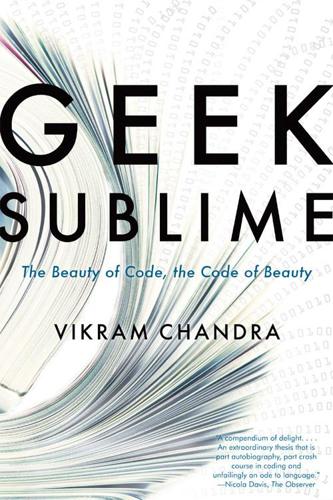
Geek Sublime: The Beauty of Code, the Code of Beauty
by
Vikram Chandra
Published 7 Nov 2013
Chapter 10: Application.Restart() 1. Muller-Ortega, “Seal of Sambhu,” 574. 2. “Fwd: Amar Chitra Katha Comics in Samskritam: Participate in Readership Survey—Google Groups.” 3. Singh, “New Life, Old Death for Sanskrit in Uttarakhand.” 4. Toole, Ada, the Enchantress of Numbers, loc. 2867–870. 5. Turing, “On Computable Numbers, with an Application to the Entscheidungs-problem (1936).” 6. Toole, Ada, the Enchantress of Numbers, loc. 2131–133. 7. Gleick, The Information, loc. 2048–052. 8. Cabanne, Dialogues with Marcel Duchamp, 18–19. 9. Fishwick, “Aesthetic Computing.” 10. Hessel, Goodman, and Kotler, “Hacking the President’s DNA.” 11.
…
Accessed February 3, 2013. http://www.ioccc.org/. Toole, Betty Alexandra. Ada, the Enchantress of Numbers: Poetical Science. Sausalito: Critical Connection, 2010. Kindle Edition. Torvalds, Linus. “Re: Stable Linux 2.6.25.10.” Gmane.org, July 15, 2008. http://article.gmane.org/gmane.linux.kernel/706950. Turing, Alan. “On Computable Numbers, with an Application to the Entscheidungs-problem (1936).” In The Annotated Turing: A Guided Tour through Alan Turing’s Historic Paper on Computability and the Turing Machine, by Charles Petzold. Indianapolis: Wiley, 2008. Urban, Hugh B. The Economics of Ecstasy: Tantra, Secrecy, and Power in Colonial Bengal.
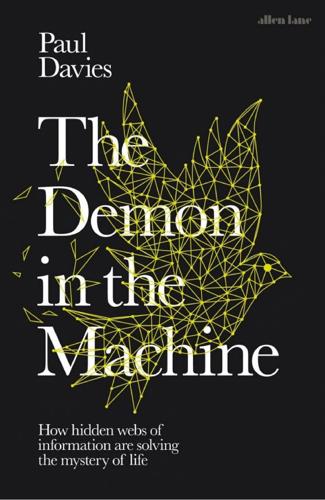
The Demon in the Machine: How Hidden Webs of Information Are Finally Solving the Mystery of Life
by
Paul Davies
Published 31 Jan 2019
Constructed as it was in the rarefied realm of formal logic, Gödel’s theorem had no apparent link with the physical world, let alone the biological world. But only five years later the Cambridge mathematician Alan Turing established a connection between Gödel’s result and Hilbert’s halting problem, which he published in a paper entitled ‘On computable numbers, with an application to the Entscheidungsproblem’.2 It proved to be the start of something momentous. Turing is best known for his role in cracking the German Enigma code in the Second World War, working in secret at Bletchley Park in the south of England. His efforts saved countless Allied lives and shortened the war by many months, if not years.
…
See David Spivak and Matt Thomson, ‘Environmental statistics and optimal regulation’, PLoS Computational Biology, vol. 10, no. 10 e 1003978 (2014). 3. THE LOGIC OF LIFE 1. ‘What is life?: an interview with Gregory Chaitin’, Admin: http://www.philosophytogo.org/wordpress/?p=1868 (18 December 2010). 2. Alan Turing, ‘On computable numbers, with an application to the Entscheidungsproblem’, Proceedings of the London Mathematical Society, ser. 2, vol. 42 (1937). See also http://www.turingarchive.org/browse.php/b/12. 3. Ibid. 4. John von Neumann, Theory of Self-reproducing Automata (University of Illinois Press, 1966). 5. George F. R.
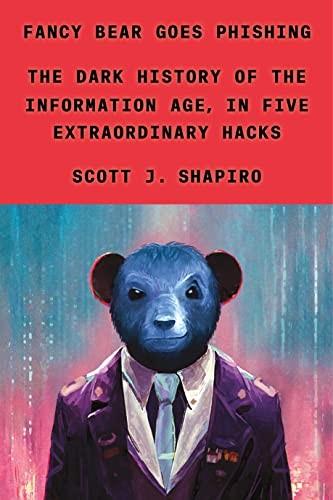
Fancy Bear Goes Phishing: The Dark History of the Information Age, in Five Extraordinary Hacks
by
Scott J. Shapiro
A “reverse” Turing Test has a computer judge and a human subject trying to appear human. CAPTCHA—the irritating image-recognition challenge that websites use for detecting bots—stands for “Completely Automated Public Turing test to tell Computers and Humans Apart.” principles of metacode: Alan Turing, “On Computable Numbers with an Application to the Entscheidungproblem,” Proceedings of the London Mathematical Society, 1936, 230–65. solvable problem: Computers cannot solve every problem, because, as Turing showed, and as I will explain in the Epilogue, most problems are not solvable by computers, humans, or any computational device that uses finite procedures.
…
It is made up entirely from the letters ‘A’, ‘C’, ‘D’, ‘L’, ‘R’, ‘N’, and from ‘;.’ If finally we replace ‘A’ by ‘1’, ‘C’ by ‘2’, ‘D’ by ‘3’, ‘L’ by ‘4’, ‘R’ by ‘5’, ‘N’ by ‘6’, and ‘;’. by ‘7’ we shall have a description of the machine in the form of an arabic numeral.” Alan Turing, “On Computable Numbers with an Application to the Entscheidungproblem,” Proceedings of the London Mathematical Society, 1936, 241–42. the following encoding scheme: Turing had gotten this core insight from Gödel’s incompleteness theorem, in which Gödel figured out how a mathematical statement could talk about itself. See Kurt Gödel, “Über formal unentscheidbare Sätze der Principia Mathematica und verwandter Systeme I,” Monatshefte für Mathematik und Physik 37 (1931): 173–98.
…
Converting back to decimal, we get 19, 22, 5, and 46. Treating them as ASCII values, we get T, W, F, and u. Thus, TWFu is the Base 64 encoding of Man. Turing’s physicality principle: “According to my definition, a number is computable if its decimal can be written down by a machine.” Alan Turing, “On Computable Numbers with an Application to the Entscheidungproblem,” Proceedings of the London Mathematical Society, 1936, 230. compute the correct answer: Here’s a simple example. Suppose you wanted to know whether a string of numbers has three 1s in it. Feed a tape with the string into your Turing Machine. The machine begins in state 0 with its head over the left end of the tape.

I, Warbot: The Dawn of Artificially Intelligent Conflict
by
Kenneth Payne
Published 16 Jun 2021
.: Princeton University Press, 2005 and Tetlock, Philip E., and Dan Gardner. Superforecasting: The Art and Science of Prediction. London: Random House, 2015. 12. The best biography is Hodges, Andrew. Alan Turing: The Enigma. London: Burnett, 1983 and for his solution see, Turing, Alan Mathison. ‘On computable numbers, with an application to the Entscheidungsproblem’, J. of Math 58, no. 345–363 (1936): 5. 13. On Shannon, see Gertner, Jon. The Idea Factory: Bell Labs and the Great Age of American Innovation. New York: Penguin Press, 2012. 14. On von Neumann, see Poundstone, William. Prisoner’s Dilemma: John von Neumann, Game Theory, and the Puzzle of the Bomb.
…
‘The evolution of reciprocal altruism’, The Quarterly Review of Biology 46, no. 1 (1971): 35–57. Tucker, Patrick. ‘Marines are building robotic war balls’, Defense One, 12 February 2015, https://www.defenseone.com/technology/2015/02/marines-are-building-robotic-war-balls/105258/. Turing, Alan Mathison. ‘On computable numbers, with an application to the Entscheidungsproblem.’ J. of Math 58, no. 345–363 (1936): 5. Turing, Alan Mathison. ‘Computing machinery and intelligence’, Mind, Volume LIX, Issue 236, October 1950, pp. 433–460, https://doi.org/10.1093/mind/LIX.236.433. Twilley, Nicola. ‘Seeing with your tongue,’ The New York Times, 8 May 2017, https://www.newyorker.com/magazine/2017/05/15/seeing-with-your-tongue.

Possible Minds: Twenty-Five Ways of Looking at AI
by
John Brockman
Published 19 Feb 2019
One can imagine a different contingent version of our intellectual and technological history had Alan Turing and John von Neumann, both of whom made major contributions to the foundations of computing, not appeared on the scene. Turing contributed a fundamental model of computation—now known as a Turing Machine—in his paper “On Computable Numbers with an Application to the Entscheidungsproblem,” written and revised in 1936 and published in 1937. In these machines, a linear tape of symbols from a finite alphabet encodes the input for a computational problem and also provides the working space for the computation. A different machine was required for each separate computational problem; later work by others would show that in one particular machine, now known as a Universal Turing Machine, an arbitrary set of computing instructions could be encoded on that same tape.
…
S., 222 Minsky, Marvin, 7, 262, 271 Mithen, Steven, 17 model-blind mode of learning, 16–17, 19 Moore, Gordon, 169 Moore’s Law, 8, 9–11 “More Is Different” (Anderson), 68 Müller, Vincent, 80 Musk, Elon, xxvi, 9 NAO, 250 nation-state superintelligences, 172–75 neural networks, 270–71 New Cinema (Expanded Cinema Festival), xvi Newell, Allen, 130 new perceptions arising from new technologies, xvi–xviii Ng, Andrew, 26 non-imminence of human-level AI argument against AI risk, 27 Norvig, Peter, 141 “no smarter than humans” argument against AI risk, 28 objective (algorist) method of prediction, 233–35 scientific objectivity, 235–39 Obrist, Hans Ulrich, 206–18 AI visualization programs, 211–13 art and science, relation between, 209–10, 214–16 art as alarm system for new development, 208 artificial stupidity, 210–11 background and overview of work of, 206–7 computers as creativity aids, 213–14 simulations, and AI, 216–18 obsolescent, reasons behind rush to make humans, 82–84 Odd John (Stapledon), 75 Omohundro, Steve, 25 “On Computable Numbers with an Application to the Entscheidungsproblem” (Turing), 57 open algorithms, 204 Oppenheimer, J. Robert, 96 optimistic AI scenario, in relation of machine superintelligences to hybrid superintelligences, 177 Orwell, George, 105, 106 Pagels, Heinz, xxiii Paglen, Trevor, 212 Paik, Nam June, 208, 259 Papert, Seymour, 271 parallel computing, xxiii–xxiv Pareto-topia, 98 Parreno, Philippe, 263–64 Pask, Gordon, 259 Pavlov, Ivan, 222 Peano, Giuseppe, 275–76 Pearl, Judea, xx, 13–19 background and overview of work of, 13–14 causal reasoning, 17–19 deep-learning, on lack of transparency in and limitations of, 15–19 human brain as nontransparent system argument, 15–16 on model-blind modes of learning, 16–17, 19 Pentland, Alex, 192–205 background and overview of work of, 192–93 credit-assignment function, applied to humans, 197–200 credit-assignment function, for AI, 196–97 culture in evolution, selecting for, 198–99 data used by AI, control over and review of, 203–4 human-AI ecologies, development of, 195–96 income inequality, 201–2 networks/ecosystems, working with, 194–95 next-generation AI, designing, 204–5 social sampling, 198–99 trust networks, building, 200–201 perception, and new technologies, xvi–xviii perceptron, 271 Perceptrons (Minsky and Papert), 271 Pinker, Steven, 100–112, 118 on AI dystopias, 108–12 background and overview of work of, 100–101 on computational theory of mind, 102–3 dystopian futures, flaws in, 105 on subjugation fear in AI scenarios, 108–10 on surveillance state dystopias, 105–7 on value alignment threat of AI, 110–11 on Wiener, 103–5, 112 Pitts, Walter, 270–71, 274 Plato, 222–23, 226 Poggio, Tomaso, 10 Popper, Karl, 116 Possible Minds Project, goal of, xxiv–xxv Principia Mathematica (Whitehead and Russell), 275 provably beneficial AI, templates for, 29–32 purposefulness, identifying, 281–84 putting purpose into machines, 23–25.
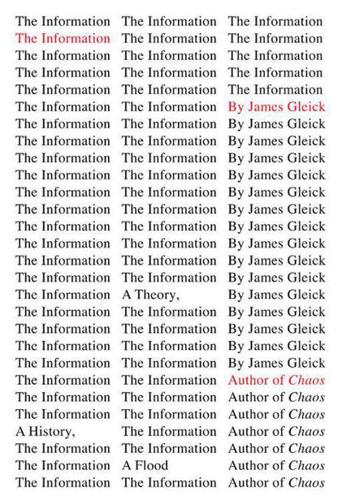
The Information: A History, a Theory, a Flood
by
James Gleick
Published 1 Mar 2011
The twentieth century gave algorithms a central role—beginning here. Turing was a fellow and a recent graduate at King’s College, Cambridge, when he presented his computable-numbers paper to his professor in 1936. The full title finished with a flourish in fancy German: it was “On Computable Numbers, with an Application to the Entscheidungsproblem.” The “decision problem” was a challenge that had been posed by David Hilbert at the 1928 International Congress of Mathematicians. As perhaps the most influential mathematician of his time, Hilbert, like Russell and Whitehead, believed fervently in the mission of rooting all mathematics in a solid logical foundation—“In der Mathematik gibt es kein Ignorabimus,” he declared.
…
♦ “NO, I’M NOT INTERESTED IN DEVELOPING A POWERFUL BRAIN”: Andrew Hodges, Alan Turing: The Enigma (London: Vintage, 1992), 251. ♦ “A CONFIRMED SOLITARY”: Max H. A. Newman to Alonzo Church, 31 May 1936, quoted in Andrew Hodges, Alan Turing, 113. ♦ “THE JUSTIFICATION … LIES IN THE FACT”: Alan M. Turing, “On Computable Numbers, with an Application to the Entscheidungsproblem,” Proceedings of the London Mathematical Society 42 (1936): 230–65. ♦ “IT WAS ONLY BY TURING’S WORK”: Kurt Gödel to Ernest Nagel, 1957, in Kurt Gödel: Collected Works, vol. 5, ed. Solomon Feferman (New York: Oxford University Press, 1986), 147. ♦ “YOU SEE … THE FUNNY LITTLE ROUNDS”: letter from Alan Turing to his mother and father, summer 1923, AMT/K/1/3, Turing Digital Archive, http://www.turingarchive.org
…
IEEE Annals of the History of Computing 18, no. 3 (1996): 4–12. ———. Ada, the Enchantress of Numbers: Prophet of the Computer Age. Mill Valley, Calif.: Strawberry Press, 1998. Tufte, Edward R. “The Cognitive Style of PowerPoint.” Cheshire, Conn.: Graphics Press, 2003. Turing, Alan M. “On Computable Numbers, with an Application to the Entscheidungsproblem.” Proceedings of the London Mathematical Society 42 (1936): 230–65. ———. “Computing Machinery and Intelligence.” Minds and Machines 59, no. 236 (1950): 433–60. ———. “The Chemical Basis of Morphogenesis.” Philosophical Transactions of the Royal Society of London, Series B 237, no. 641 (1952): 37–72.
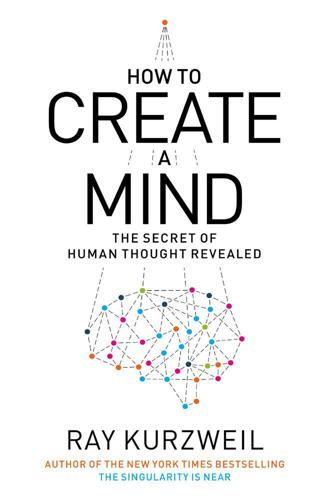
How to Create a Mind: The Secret of Human Thought Revealed
by
Ray Kurzweil
Published 13 Nov 2012
Chapter 8: The Mind as Computer 1. Salomon Bochner, A Biographical Memoir of John von Neumann (Washington, DC: National Academy of Sciences, 1958). 2. A. M. Turing, “On Computable Numbers, with an Application to the Entscheidungsproblem,” Proceedings of the London Mathematical Society Series 2, vol. 42 (1936–37): 230–65, http://www.comlab.ox.ac.uk/activities/ieg/e-library/sources/tp2-ie.pdf. A. M. Turing, “On Computable Numbers, with an Application to the Entscheidungsproblem: A Correction,” Proceedings of the London Mathematical Society 43 (1938): 544–46. 3. John von Neumann, “First Draft of a Report on the EDVAC,” Moore School of Electrical Engineering, University of Pennsylvania, June 30, 1945.

The Big Nine: How the Tech Titans and Their Thinking Machines Could Warp Humanity
by
Amy Webb
Published 5 Mar 2019
There wasn’t a way to build a thinking machine—the processes, materials, and power weren’t yet available—and so the theory couldn’t be tested. The leap from theoretical thinking machines to computers that began to mimic human thought happened in the 1930s with the publication of two seminal papers: Claude Shannon’s “A Symbolic Analysis of Switching and Relay Circuits” and Alan Turing’s “On Computable Numbers, with an Application to the Entscheidungsproblem.” As an electrical engineering student at MIT, Shannon took an elective course in philosophy—an unusual diversion. Boole’s An Investigation of the Laws of Thought became the primary reference for Shannon’s thesis. His advisor, Vannevar Bush, encouraged him to map Boolean logic to physical circuits.
…
See also Transparency standards Transparency standards: establishment of for Big Nine, 251; establishment of global, 252 Tribes, AI: anti-humanistic bias in, 57; characteristics, 56; groupthink, 53; homogeneity, 52; lack of diversity, 56; leaders, 53–65; need to address diversity within, 57–58; sexual assault and harassment by members, 55–56; unconscious bias training programs and, 56; unconscious biases of members, 52; university education and homogeneity of members, 58–61, 64 Trudeau, Justin, 236 TrueNorth neuromorphic chip, 92 Trump, Donald: administration, 70, 75, 85; campaign climate change comments, 75; science and technology research budget cuts, 243 Turing, Alan, 24–25, 26, 27–29, 30, 31, 35, 259; morphogenesis theory, 204; neural network concept, 27–29;“On Computable Numbers, With an Application to the Entscheidungsproblem,” 24. See also Turing Test Turing test, 27–28, 50, 146, 169, 184 Turriano, Juanelo: mechanical monk creation of, 18, 25 Tversky, Amos, 108 2000 HUB5 English, 181 2001: A Space Odyssey, 2, 35: HAL 9000, 2, 35, 39 U.S. Army: ENIAC, 27; Futures Command, 212 U.S.
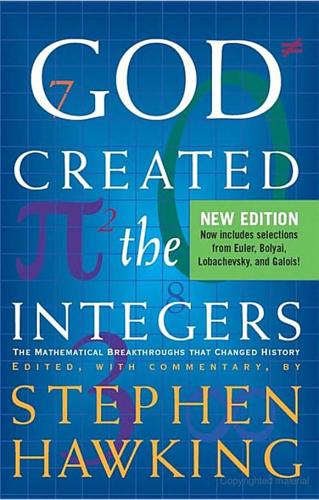
God Created the Integers: The Mathematical Breakthroughs That Changed History
by
Stephen Hawking
Published 28 Mar 2007
Suppose that in a certain complete configuration the numbers representing the successive symbols on the tape are s1 s2 . . . sn, that the m-th symbol is scanned, and that the m-configuration has the number t; then we may represent this complete configuration by the formula ON COMPUTABLE NUMBERS, WITH AN APPLICATION TO THE ENTSCHEIDUNGSPROBLEM. A CORRECTION In a paper entitled “On computable numbers, with an application to the Entscheidungsproblem”[1] the author gave a proof of the insolubility of the Entscheidungsproblem of the “engere Funktionenkalkül”. This proof contained some formal errors[2] which will be corrected here: there are also some other statements in the same paper which should be modified, although they are not actually false as they stand.
…
Selections from Henri Lebesgue’s Integrale, Longeur, Aire reprinted from Annali di Matematica, Pura ed Applicata, 1902, Ser. 3, vol. 7, pp. 231–359. Kurt Gödel’s On Formally Undecidable Propositions of Principia Mathematica and Related Systems, trans. B. Meltzer, courtesy of Dover Publications. Alan Turing’s On computable numbers with an application to the Entscheidungsproblem, Proceedings of the London Mathematical Society courtesy of the London Mathematical Society. Picture Credits: Euclid: Getty Images. Archimedes: Getty Images. Diophantus: Title page of Diophanti Alexandrini Arthimeticorum libri sex. . . ., 1621: Library of Congress, call number QA31.D5, Rare Book/Special Collections Reading Room, (Jefferson LJ239).
…
CONTENTS Introduction EUCLID (C. 325BC–265BC) His Life and Work Selections from Euclid’s Elements Book I: Basic Geometry—Definitions, Postulates, Common Notions; and Proposition 47, (leading up to the Pythagorean Theorem) Book V: The Eudoxian Theory of Proportion—Definitions & Propositions Book VII: Elementary Number Theory—Definitions & Propositions Book IX: Proposition 20: The Infinitude of Prime Numbers Book IX: Proposition 36: Even Perfect Numbers Book X: Commensurable and Incommensurable Magnitudes ARCHIMEDES (287BC–212BC) His Life and Work Selections from The Works of Archimedes On the Sphere and Cylinder, Books I and II Measurement of a Circle The Sand Reckoner The Methods DIOPHANTUS (C. 200–284) His Life and Work Selections from Diophantus of Alexandria, A Study in the History of Greek Algebra Book II Problems 8–35 Book III Problems 5–21 Book V Problems 1–29 RENÉ DESCARTES (1596–1650) His Life and Work The Geometry of Rene Descartes ISAAC NEWTON (1642–1727) His Life and Work Selections from Principia On First and Last Ratios of Quantities LEONHARD EULER (1707–1783) His Life and Work On the sums of series of reciprocals (De summis serierum reciprocarum) The Seven Bridges of Konigsberg Proof that Every Integer is A Sum of Four Squares PIERRE SIMON LAPLACE (1749–1827) His Life and Work A Philosophical Essay on Probabilities JEAN BAPTISTE JOSEPH FOURIER (1768–1830) His Life and Work Selection from The Analytical Theory of Heat Chapter III: Propagation of Heat in an Infinite Rectangular Solid (The Fourier series) CARL FRIEDRICH GAUSS (1777–1855) His Life and Work Selections from Disquisitiones Arithmeticae (Arithmetic Disquisitions) Section III Residues of Powers Section IV Congruences of the Second Degree AUGUSTIN-LOUIS CAUCHY (1789–1857) His Life and Work Selections from Oeuvres complètes d’Augustin Cauchy Résumé des leçons données à l’École Royale Polytechnique sur le calcul infinitésimal (1823), series 2, vol. 4 Lessons 3–4 on differential calculus Lessons 21–24 on the integral NIKOLAI IVANOVICH LOBACHEVSKY (1792–1856) His Life and Work Geometrical Researches on the Theory of Parallels JÁNOS BOLYAI (1802–1860) His Life and Work The Science of Absolute Space ÉVARISTE GALOIS (1811–1832) His Life and Work On the conditions that an equation be soluble by radicals Of the primitive equations which are soluble by radicals On Groups and Equations and Abelian Integrals GEORGE BOOLE (1815–1864) His Life and Work An Investigation of the Laws of Thought BERNHARD RIEMANN (1826–1866) His Life and Work On the Representability of a Function by Means of a Trigonometric Series (Ueber die Darstellbarkeit eine Function durch einer trigonometrische Reihe) On the Hypotheses which lie at the Bases of Geometry (Ueber die Hypothesen, welche der Geometrie zu Grunde liegen) On the Number of Prime Numbers Less than a Given Quantity (Ueber die Anzahl der Primzahlen unter einer gegebenen Grösse) KARL WEIERSTRASS (1815–1897) His Life and Work Selected Chapters on the Theory of Functions, Lecture Given in Berlin in 1886, with the Inaugural Academic Speech, Berlin 1857 § 7 Gleichmässige Stetigkeit (Uniform Continuity) RICHARD DEDEKIND (1831–1916) His Life and Work Essays on the Theory of Numbers GEORG CANTOR (1848–1918) His Life and Work Selections from Contributions to the Founding of the Theory of Transfinite Numbers Articles I and II HENRI LEBESGUE (1875–1941) His Life and Work Selections from Integrale, Longeur, Aire (Intergral, Length, Area) Preliminaries and Integral KURT GÖDEL (1906–1978) His Life and Work On Formally Undecidable Propositions of Principia Mathematica and Related Systems ALAN TURING (1912–1954) His Life and Work On computable numbers with an application to the Entscheidungsproblem, Proceedings of the London Mathematical Society INTRODUCTION WE ARE LUCKY TO LIVE IN AN AGE LN WHICH WE ARE STILL MAKING DISCOVERIES. IT IS LIKE THE DISCOVERY OF AMERICA-YOU ONLY DISCOVER IT ONCE. THE AGE IN WHICH WE LIVE IS THE AGE IN WHICH WE ARE DISCOVERING THE FUNDAMENTAL LAWS OF NATURE . . .

In Our Own Image: Savior or Destroyer? The History and Future of Artificial Intelligence
by
George Zarkadakis
Published 7 Mar 2016
S., and Pitts, W. (1943), ‘A logical calculus of the ideas immanent in nervous activity’, in: Bulletin of Mathematical Biophysics (5), pp. 115–33. 6Dehaene, N., and Naccache, L. (2001), ‘Towards a cognitive neuroscience of consciousness: basic evidence of a workspace framework’, in: Cognition, 79 (1–2), pp. 1-37. 7Artificial Intelligence split from cybernetics in the summer of 1956 with its inaugural conference in Dartmouth, New Hampshire, one year before von Neumann’s death. 8Turing, A. M. (1936), ‘On Computable Numbers, with an Application to the Entscheidungsproblem’, Proceedings of the London Mathematical Society, 2 (1937), 42, pp. 230–65. 9To be more accurate, Gödel encoded metamathematical statements within ordinary arithmetic. 10The incomplete manuscript and notes based on a series of lectures given by von Neumann at the University of Illinois in 1949 was assembled and edited by Arthur Burks and published ten years after von Neumann’s death. 11New findings in epigenetics show that the mechanism of passing hereditary features to future generations is more complex than previously thought, and probably involves other systems in the cell beyond DNA replication. 12The human mind may be beyond logical coding (as Gödel has indirectly showed) but it is not beyond computation.
…
That was the actual statement that Gödel ‘formalised’. 14To be more precise, Gödel proved that for any computable axiomatic system that is powerful enough to describe arithmetic of the natural numbers (e.g. the Peano axioms) the consistency of the axioms cannot be proven within the system. 15Heisenberg’s uncertainty principle essentially states that we can never know everything about a quantum phenomenon. Therefore, nature will remain forever at least partially unknown to us. 16Turing, A. M. (1936), ‘On Computable Numbers, with an Application to the Entscheidungsproblem’, in: Proceedings of the London Mathematical Society, 1937, Vol. 2, No. 42, pp. 230–65. 17The American mathematician Alonzo Church independently published his proof of the Entscheidungsproblem for the American Mathematical Society using a method called ‘lamda calculus’, and therefore the solution is known as the Turing-Church theorem.
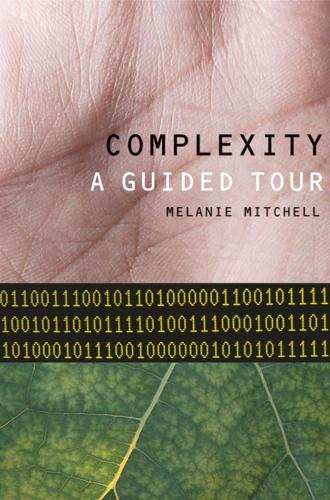
Complexity: A Guided Tour
by
Melanie Mitchell
Published 31 Mar 2009
“This was an amazing new turn”: Hodges, A., Alan Turing: The Enigma. New York: Simon & Schuster, 1983, p. 92. “Turing killed off the third”: Another mathematician, Alonzo Church, also proved that there are undecidable statements in mathematics, but Turing’s results ended up being more influential. “his answer, again, was ‘no’ ”: Turing, A. M., On computable numbers, with an application to the Entscheidungsproblem. Proceedings of the London Mathematical Society, 2(42), 1936, pp. 230–265. “According to his biographer Hao Wang”: Wang, H., Reflections on Kurt Gödel. Cambridge, MA: MIT Press, 1987. Chapter 5 “All great truths begin as blasphemies”: Shaw, G.
…
On the decrease of entropy in a thermodynamic system by the intervention of intelligent beings. Zeitschrift fuer Physik, 53, 1929, pp. 840–856. Tattersall, I. Becoming Human: Evolution and Human Uniqueness. New York: Harvest Books, 1999. Travis, J. Eye-opening gene. Science News Online, May 10, 1997. Turing, A. M. On computable numbers, with an application to the Entscheidungsproblem. Proceedings of the London Mathematical Society, 2(42), 1936, pp. 230–265. Ulam, S. M. and von Neumann, J. On combination of stochastic and deterministic processes (abstract). Bulletin of the American Mathematical Society, 53, 1947, 1120. Varn, D.

Tools for Thought: The History and Future of Mind-Expanding Technology
by
Howard Rheingold
Published 14 May 2000
Turing then proved that for any formal system, there exists a Turing machine that can be programmed to imitate it. This kind of general formal system with the ability to imitate any other formal system was what Turing was getting at. These systems are now known as "universal Turing machines." The theory was first stated in a paper with the forbidding title "On Computable Numbers, with an application to the Entscheidungsproblem." The Turing Machine was a hypothetical device Turing invented on the way to settling a critical question about the foundations of mathematics as a formalized means of thinking. He showed that his device could solve infinitely many problems, but that there are some problems that cannot be solved because there is no way of predicting in advance whether or when the machine is going to stop.
…
[10] George Boole, An investigation of the Laws of Thought, on Which are Founded the Mathematical Theories of Logic and Probabilities (London: Macmillan, 1854; reprint, New York: Dover Publications, 1958), 1-3 [11]Leon E Truesdell, The Development of Punch Card Tabulation in the Bureau of the Census, 1890-1940 (Washington: U.S. Government Printing Office, 1965), 30-31. [12] Ibid., 31. Chapter Three: The First Hacker and his Imaginary Machine [1] Alan M. Turing, "On Computable Numbers, with an Application to the Entscheidungsproblem," Proceedings of the London Mathematical Society, second series, vol. 42, part 3, November 12, 1936, 230-265. [2] An amusing example of an easily constructed Turing machine, using pebbles and toilet paper, is given in the third chapter of Joseph Weizenbaum, Computer Power and Human Reason (San Francisco: W.
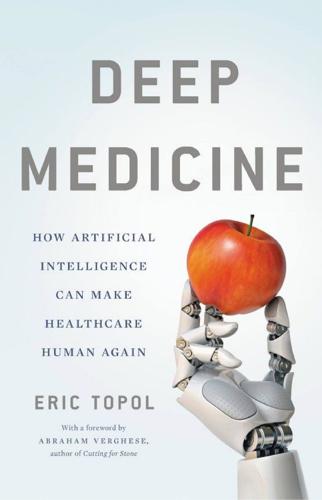
Deep Medicine: How Artificial Intelligence Can Make Healthcare Human Again
by
Eric Topol
Published 1 Jan 2019
A BRIEF HISTORY With all the chatter and buzz about AI these days, it would be easy to think it was some kind of new invention, but, conceptually, it goes back at least eighty years. In 1936 Alan Turing published a paper on powerful, automated, intelligent systems—a universal computer—titled “On Computable Numbers, with an Application to the Entscheidungsproblem.”13 I don’t understand the multitude of equations in this thirty-six-page gem, but I must agree with his statement, “We are now in a position to show that the Entscheidungsproblem cannot be solved,” both because I can’t say it and still don’t have a clue what it is!
…
Mazzotti, M., “Algorithmic Life,” Los Angeles Review of Books. 2017. 10. Harari, Y. N., Homo Deus. 2016. New York: HarperCollins, p. 348. 11. Harari, Homo Deus. 12. Beam, A. L., and I. S. Kohane, “Big Data and Machine Learning in Health Care.” JAMA, 2018. 319(13): pp. 1317–1318. 13. Turing, A. M., “On Computable Numbers with an Application to the Entscheidungsproblem.” Proceedings of the London Mathematical Society, 1936. 42(1): pp. 230–265. doi: 10.1112/plms/s2-42.1.230. 14. Turing, A. M., “Computing Machinery and Intelligence.” Mind, 1950. 49: pp. 433–460. https://www.csee.umbc.edu/courses/471/papers/turing.pdf. 15.
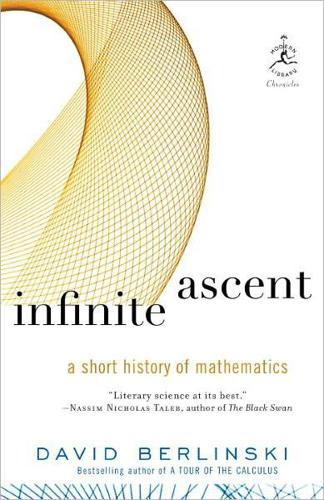
Infinite Ascent: A Short History of Mathematics
by
David Berlinski
Published 2 Jan 2005
Some years after Gödel presented his results, the American logician Alonzo Church defined what he called the lambda-computable functions. And to roughly the same point since the recursive and the lambda-computable functions, although quite different, did the same thing and carried on in the same way. In 1936, Alan Turing published the first of his papers on computability, “On Computable Numbers with an Application to the Entscheidungsproblem,” and so gave the idea of an algorithm a vivid and unforgettable metaphor. An effective calculation is any calculation that could be undertaken, Turing argued, by an exceptionally simple imaginary machine, or even a human computer, someone who has, like a clerk in the department of motor vehicles or a college dean, been stripped of all cognitive powers and can as a result execute only a few primitive acts.
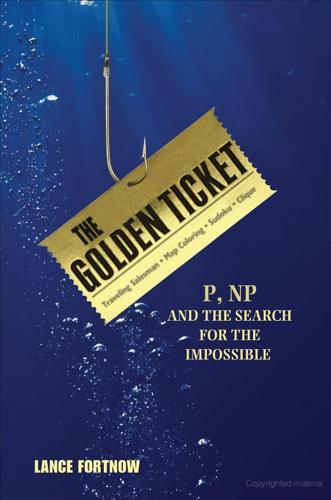
The Golden Ticket: P, NP, and the Search for the Impossible
by
Lance Fortnow
Published 30 Mar 2013
Trakhtenbrot, “A Survey of Russian Approaches to Prebor (Brute-Force Search) Algorithms,” Annals of the History of Computing 6, no. 4 (October 1984): 384–400. Warren McCulloch and Walter Pitts, “A Logical Calculus of the Ideas Immanent in Nervous Activity,” Bulletin of Mathematical Biology 5, no. 4 (1943): 115–33. Panel discussion, Complexity of Computer Computations 40, no. 4 (1972): 169–85. Alan Turing, “On Computable Numbers, with an Application to the Entscheidungsproblem,” Proceedings of the London Mathematical Society 42 (1936): 230–65. S. Yablonsky, “On the Impossibility of Eliminating PEREBOR in Solving Some Problems of Circuit Theory,” Doklady Akademii Nauk SSSR 124 (1959): 44–47. Y. Zhuravlev, “On the Impossibility of Constructing Minimal Disjunctive Normal Forms for Boolean Functions by Algorithms of a Certain Class, Doklady Akademii Nauk SSSR 132 (1960): 504–6.
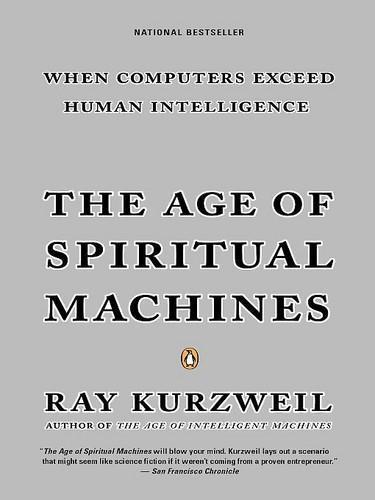
The Age of Spiritual Machines: When Computers Exceed Human Intelligence
by
Ray Kurzweil
Published 31 Dec 1998
Fatmi and R. W Young, “A Definition of Intelligence,” Nature 228 (1970): 97. 16 Alan Turing showed that the essential basis of computation could be modeled with a very simple theoretical machine. He created the first theoretical computer in 1936 (first introduced in Alan M. Turing, “On Computable Numbers with an Application to the Entscheinungs Problem,” Proc. London Math. Soc. 42 [1936]: 230-265) in an eponymous conception called the Turing machine. As with a number of Turing’s breakthroughs, he would have both the first and last word. The Turing machine represented the founding of modern computational theory.
…
_______. Visual Explanations: Images and Quantities, Evidence and Narrative. Cheshire, CT: Graphics Press, 1997. Turing, Alan. “Computing Machinery and Intelligence.” Reprinted in Minds and Machines, edited by Alan Ross Anderson. Englewood Cliffs, NJ: Prentice-Hall, 1964. ________. “On Computable Numbers, with an Application to the Entscheidungsproblem ” Proceedings, London Mathematical Society, 2, no. 42 (1936). Turkle, Sherry. The Second Self: Computers and the Human Spirit. New York: Simon and Schuster, 1984. Tye, Michael. Ten Problems of Consciousness: A Representational Theory of the Phenomenal Mind.

Computer: A History of the Information Machine
by
Martin Campbell-Kelly
and
Nathan Ensmenger
Published 29 Jul 2013
Alan Turing was born in 1912 and at school he was drawn to science and practical experimenting. He won a scholarship to King’s College, Cambridge University, and graduated in mathematics with the highest honors in 1934. He became a Fellow of King’s College and, in 1936, published his classic paper “On Computable Numbers with an Application to the Entscheidungsproblem” in which he described the Turing Machine. Turing showed that not all mathematical questions were decidable, and that one could not always determine whether or not a mathematical function was computable. For nonmathematicians this was an obscure concept to grasp, although later—after World War II—Turing explained the idea in an article in Science News.
…
See NCR National Defense Research Committee (NDRC), 66, 72, 74, 145 National Science Foundation (NSF), 292 National Semiconductor, 221 Nature, 41, 59, 299–300 Nautical Almanac, 4, 7, 47, 52–53 Navigation tables, 4, 47, 53 NCR accounting machines, 31, 38, 53, 117 acquisition of CRC, 117 business software, 122 business strategies of, 30, 34, 123–124, 132 cash registers, 31–32 computer industry and, 98 digital computing machines, 54 as IBM competitor, 133 non-IBM-compatible computers of, 132 postwar business challenges, 103 punched-card systems, 21, 38 role in computer industry, 21, 117 sales strategies of, 30, 31–32, 36 scanning technology, 164 as software contractors, 177 technical innovation by, 31 user training, 30 Nelson, Ted, 234–235, 237, 279, 286 Netiquette, 285 Netscape Communications Corporation, 289–290 Network analyzers, 48, 50 Network protocols, 285 Networks, 275 New Communalists, 234 New Deal projects, 39 New Product Line (IBM), 126–128, 129 Newman, Max, 82 Nokia, 297, 298 Non-IBM-compatible computers, 132 Norris, William, 99, 124, 249 Northrop Aircraft Corporation, 101, 102, 105, 116 Notation, programming, 168 Notebook computers, 296, 298 Noyce, Robert, 219–221, 222, 231, 249 Noyes, Eliot, 120 Nuclear weapons, 65, 74, 78, 109, 127, 149 Numerical meteorology, 50–52 Office machine industry. See Business machine industry Office of Naval Research (ONR), 147–148, 150 Office of Scientific Research and Development (OSRD), 49, 65–66, 74 Office systematizers, 19, 134 Olivetti, 197, 251 Olsen, Kenneth, 217–218 Omidyar, Pierre, 295 “On Computable Numbers with an Application to the Entscheidungsproblem” (Turing), 60 Opel, John, 246 Open-source software, 215, 288, 296 Operating systems for mainframe computers, 179–182, 205, 206, 210, 212–215 for mobile devices, 297, 298 for personal computers, 242–243, 246–247, 253–254, 257–258, 264–267 See also specific operating systems Optical character recognition, 164 OS/2 operating system, 265, 266 OS/360 operating system, 179–182, 183, 212 Osborne 1 computer, 198 (photo), 296 Outsourcing of components and software, 245–246, 247 Oxford English Dictionary, 3 Packaged software programs, 186–188, 254 Packard, David, 249 Packet-switching technology, 281–282 Page, Larry, 294 Palm, Inc., 297, 298 Palo Alto Research Center (PARC), 260, 261, 280, 296 Papian, Bill, 150 Parker, Sean, 301 Pascal programming language, 185 Passages from the Life of a Philosopher (C.

The Stack: On Software and Sovereignty
by
Benjamin H. Bratton
Published 19 Feb 2016
Later, the formalization of logic within the philosophy mathematics (from Pierre-Simon Laplace, to Gottlob Frege, Georg Cantor, David Hilbert, and so many others) helped to introduce, inform, and ultimately disprove a version of the Enlightenment as the expression of universal deterministic processes (of both thought and physics). In 1936, with his now-famous paper, “On Computable Numbers, with an Application to the Entscheidungsproblem,” a very young Alan Turing at once introduced the theoretical basis of modern computing and demonstrated the limits of what could and could not ever be calculated and computed by a universal technology. Turing envisioned his famous “machine” according to the tools of his time to involve an infinite amount of “tape” divided into cells that can store symbols, moved along a stationary read-write “head” that can alter those symbols, a “state register” that can map the current arrangement of symbols along the tape, and a “table” of instructions that tells the machine to rewrite or erase the symbol and to move the “head,” assuming a new state for the “register” to map.
…
Readers may reference the image at this book's companion website, thestack.org. 5. Originally conceived in 1936 by twenty-four-year-old Alan Turing and called an “a-machine” (for “automatic machine”), it describes a hypothetical universal computer, which, given enough time and energy, would be capable of calculating any “computable” problem. In that paper, “On Computable Numbers, with an Application to the Entscheidungs Problem,” Proceedings of the London Mathematical Society, Ser. 2 42 (1937), Turing demonstrates the range of problems that in fact are not computable. The figure of the Turing machine, as a philosophical and machinic hypothesis, stands for the technology of universal computation and for the ultimate limits of computation within mathematics. 6.
…
See also User AI User, 277–279 algorithmic hardware, 348–349 animal User, 274–277 as co-User, 276–277, 349 designing for, 339 enrollment and motivation, 297–298 identifying, 345 machine User, 279–284 rights of, 345 nonpersonhood, 173–175 nonplace, end of, 16 non-state actors with nation-state functions, 10–11 nonvisual interfaces, 341, 424n41 Nortel patent bid, 134 North American Free Trade Agreement, 443n23 North Sea wind farms proposal (OMA), 181 No-Stop City project (Archizoom), 149–151, 160, 178–179 notational systems, 383n4 NSA/CSS Threat Operations Center, US, 441n8 Obama, Barack, 98, 180, 322 Obi-Wan Kenobi, 176 object identifiers, universal, 214–215 object-instruments, computational, 227 objects addressability, 214–215 agency of, 131 defined, 402n59 essentials of, 260 identifiers, digital, 207, 214–215 interface design, 230–235 memory of, 212, 215 non-citizen User, 188 object-to-object communication, 197, 210, 212, 216, 338 object-to-object spam, 216 reordering by, 206 semantic relations, 202–203 SPIME designation for, 201–204 as symbolic artifacts, 212 ocean exploration, 30 oceanic data centers, 113–114, 140 Oculus, 127 Office of Metropolitan Architecture (OMA), 53, 99, 170, 178, 180–181 offshoring, 443n23 oil geopolity, 99 Oklahoma City Bombing guidelines, 322 “On Computable Numbers, with an Application to the Entscheidungsproblem” (Turing), 78 One57, New York, 311 One Riverside Park, New York, 311 OOZ (Jeremijenko), 276 Open, The (Agamben), 273 OpenFlow, 437n58 open government movement, 121 Open Stack, 174 open systems interconnection (OSI) network model, 61–63 Operation Centurion, Dr.

Clean Agile: Back to Basics
by
Robert C. Martin
Published 13 Oct 2019
I wish I could have been a fly on the wall when Alan Turing was writing his 1936 paper.1 My guess is that the many “programs” he wrote in that book were developed in small steps with plenty of desk checking. I also imagine that the first code he wrote for the Automatic Computing Engine, in 1946, was written in small steps, with lots of desk checking, and even some real testing. 1. Turing, A. M. 1936. On computable numbers, with an application to the Entscheidungsproblem [proof]. Proceedings of the London Mathematical Society, 2 (published 1937), 42(1):230–65. The best way to understand this paper is to read Charles Petzold’s masterpiece: Petzold, C. 2008. The Annotated Turing: A Guided Tour through Alan Turing’s Historic Paper on Computability and the Turing Machine.

The Logician and the Engineer: How George Boole and Claude Shannon Created the Information Age
by
Paul J. Nahin
Published 27 Oct 2012
In developing this view of a computing machine, Turing was not suggesting it as a practical design for an actual machine. Rather, as a mathematician he used his machines as a conceptual framework in which to study the limits on just what mechanistic devices can actually compute. Indeed, the title of his 1936 paper, “On Computable Numbers, with an Application to the Entscheidungsproblem’’—that final tongue-twister translates as “the decision problem’’—clearly shows Turing’s intent. His great accomplishment was to show that not all the numbers we can imagine are in fact actually computable. That is, Turing showed there are limits to what a computer—any computer—can do.

Internet for the People: The Fight for Our Digital Future
by
Ben Tarnoff
Published 13 Jun 2022
See Andrey Kurenkov, “A Brief History of Neural Nets and Deep Learning,” Skynet Today, September 27, 2020, and Alex Hanna et al., “Lines of Sight,” Logic, December 20, 2020. 109, The sophistication of these systems … “Data imperative”: Marion Fourcade and Kieran Healy, “Seeing Like a Market,” Socio-Economic Review 15, no. 1 (2017): 9–29. 110, The same individual … Smartphone usage: “Mobile Fact Sheet,” April 7, 2021, Pew Research Center. In the same period, smart-phones proliferated throughout the rest of the world as well: in 2019, the penetration rate reached just over 40 percent of the world’s population, some 3.2 billion people. 111, As a kind of networked intelligence … “Be used too: A. M. Turing, “On Computable Numbers, with an Application to the Entscheidungsproblem,” Proceedings of the London Mathematical Society 2, no. 1 (1937): 241. 111, What if this universality became ubiquitous? The network is the computer: Tekla S. Perry, “Does the Repurposing of Sun Microsystems’ Slogan Honor History, or Step on It?,” IEEE Spectrum: View from the Valley, July 30, 2019. 111, Consider the “smart cooler” … Smart cooler: Sidney Fussell, “Now Your Groceries See You, Too,” The Atlantic, January 25, 2019; Lara O’Reilly, “Walgreens Tests Digital Cooler Doors with Cameras to Target You with Ads,” Wall Street Journal, January 11, 2019. 112, At least, this … Lara O’Reilly, “Walgreens Is Expanding Its Digital Cooler Doors Ad Network,” Digiday, February 3, 2020. 112, But, as with Google … Impossible to determine someone’s gender: Os Keyes, “The Body Instrumental,” Logic, December 7, 2019.
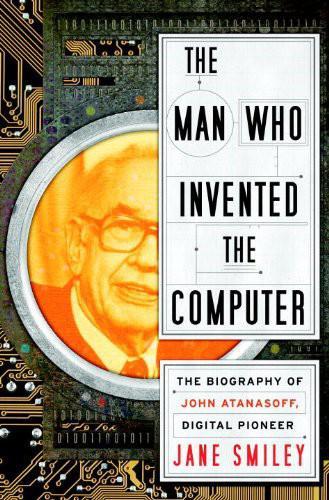
The Man Who Invented the Computer
by
Jane Smiley
Published 18 Oct 2010
Andrew Hodges, Turing’s biographer, points out that Turing’s idea “was not only a matter of abstract mathematics, not only a play of symbols, for it involved thinking about what people did in the physical world … His machines—soon to be called Turing Machines—offered a bridge, a connection between abstract symbols and the physical world. Indeed, his imagery was, for Cambridge, almost shockingly industrial.” In May 1936, Alan Turing submitted his paper, entitled “On Computable Numbers, with an Application to the Entscheidungsproblem,” to the Proceedings of the London Mathematical Society and then applied unsuccessfully for a Procter Fellowship at Princeton. As far as anyone in England knew, only Turing and the American Alonzo Church had come up with answers to the Entscheidungsproblem.

The Innovators: How a Group of Inventors, Hackers, Geniuses and Geeks Created the Digital Revolution
by
Walter Isaacson
Published 6 Oct 2014
Despite what Hilbert seemed to hope, no mechanical procedure can determine the provability of every mathematical statement. Gödel’s incompleteness theory, the indeterminacy of quantum mechanics, and Turing’s answer to Hilbert’s third challenge all dealt blows to a mechanical, deterministic, predictable universe. Turing’s paper was published in 1937 with the not so snappy title “On Computable Numbers, with an Application to the Entscheidungsproblem.” His answer to Hilbert’s third question was useful for the development of mathematical theory. But far more important was the by-product of Turing’s proof: his concept of a Logical Computing Machine, which soon came to be known as a Turing machine. “It is possible to invent a single machine which can be used to compute any computable sequence,” he declared.10 Such a machine would be able to read the instructions of any other machine and carry out whatever task that machine could do.
…
Jude), ref1, ref2 military, ballistic missiles of, ref1 military-industrial-academic complex, ref1, ref2, ref3, ref4 Miller, Herman, ref1 Millikan, Robert, ref1 Mills, Thomas, ref1 Mims, Forrest, ref1, ref2 Mind, ref1 Mining Data at Stanford (MIDAS), ref1 MINIX, ref1, ref2 Minsky, Marvin, ref1, ref2, ref3, ref4, ref5, ref6, ref7 Minskytron, ref1, ref2 Minuteman II, ref1, ref2 Miracle Month, ref1 MIT, ref1, ref2, ref3, ref4, ref5, ref6, ref7, ref8, ref9, ref10, ref11, ref12, ref13, ref14, ref15, ref16, ref17 MITS (Micro Instrumentation and Telemetry Systems), ref1, ref2, ref3, ref4, ref5, ref6 MKUltra, ref1 Model K, ref1, ref2 modems, ref1, ref2 moon landing, ref1, ref2 Moore, Betty, ref1 Moore, Fred, ref1, ref2, ref3 Moore, Gordon, ref1, ref2, ref3, ref4, ref5, ref6, ref7, ref8, ref9, ref10, ref11, ref12, ref13 corporate culture and, ref1 Intel founding and, ref1 as nonauthoritarian, ref1 on Noyce’s leadership skills, ref1 and Shockley’s replacement, ref1, ref2, ref3 Moore School Lectures, ref1 Moore’s Law, ref1, ref2, ref3, ref4, ref5, ref6 Moravec, Hans, ref1 Morcom, Christopher, ref1, ref2 Mosaic, ref1, ref2, ref3, ref4, ref5 “Mother of All Demos, The,” ref1, ref2, ref3, ref4, ref5, ref6, ref7, ref8, ref9 Motwani, Rajeev, ref1 mouse, ref1, ref2, ref3 MS-DOS, ref1, ref2 Mumford, Lewis, ref1 Munzner, Tamara, ref1 Murray, Arnold, ref1 music, ref1, ref2, ref3 MySpace, ref1 Myth of the Machine, The (Mumford), ref1 NASA, ref1, ref2, ref3, ref4 NASA Ames Research Center, ref1 National Center for Atmospheric Research, ref1 National Center for Supercomputing Applications (NCSA), ref1, ref2 National Defense Research Committee, ref1, ref2 National Information Infrastructure Act (1993), ref1 National Physical Laboratory, ref1, ref2, ref3, ref4 National Science Foundation, ref1, ref2, ref3, ref4, ref5 National Semiconductor, ref1 Navy, U.S., ref1 Nelson, Ted, ref1, ref2, ref3 Netscape, ref1 networks, ref1, ref2 data blocks in, ref1 distributed, ref1, ref2, ref3, ref4 lack of centralization in, ref1, ref2, ref3 packet switched, ref1, ref2, ref3, ref4 Network Working Group, ref1 Neumann, Max, ref1 neural networks, ref1 neurons, ref1 Newman, Max, ref1, ref2, ref3, ref4, ref5, ref6, ref7, ref8, ref9 newsgroups, ref1 Newton, Isaac, ref1 New Yorker, ref1 New York Times, ref1, ref2, ref3, ref4, ref5, ref6, ref7, ref8 New York World’s Fair (1939), ref1, ref2, ref3 NeXT, ref1, ref2 Nishi, Kay, ref1 Nixon, Richard, ref1, ref2 NM Electronics, ref1 noncomputable numbers, ref1 North Carolina, University of, ref1 Norton, Larry, ref1 Norvig, Peter, ref1 Nova, ref1, ref2 Novack, Ken, ref1 Noyce, Robert, ref1, ref2, ref3, ref4, ref5, ref6, ref7, ref8, ref9, ref10, ref11, ref12, ref13 corporate culture and, ref1, ref2, ref3, ref4, ref5, ref6, ref7, ref8 Fairchild resignation of, ref1 Intel employees empowered by, ref1 Intel money raised by, ref1 Intel’s organization chart drawn by, ref1 microchip of, ref1, ref2 microprocessor and, ref1 in patent lawsuit, ref1 planar process and, ref1 resistor designed by, ref1 as Shockley’s replacement, ref1 on synergy, ref1 n-p-n junction architecture, ref1 NSFNET, ref1 n-type, ref1 Nuance Communications, ref1 nuclear weapons, ref1 Internet and, ref1 Nupedia, ref1, ref2, ref3 Nutting, Bill, ref1 Nutting Associates, ref1, ref2, ref3 Obama, Barack, ref1 Office of Defense Mobilization, ref1 Office of Scientific Research, ref1 Ohm’s Law, ref1 oil, ref1 Olsen, Ken, ref1 Olson, Judith, ref1 “On Computable Numbers, with an Application to the Entscheidungsproblem“ (Turing), ref1, ref2 On Distributed Communications (Baran), ref1 One Flew Over the Cuckoo’s Nest (Kesey), ref1 online communities, ref1 oNLine System (NLS), ref1, ref2, ref3, ref4, ref5, ref6 On the Connexion of the Physical Sciences (Somerville), ref1 Opel, John, ref1 open architecture, ref1, ref2 OpenOffice, ref1 open-sourcing, ref1, ref2 Operating Manual for Spaceship Earth (Fuller), ref1 operating systems, ref1 open-source, ref1 operations, ref1 Ordnance Department, U.S.

Know Thyself
by
Stephen M Fleming
Published 27 Apr 2021
Trouche, Emmanuel, Petter Johansson, Lars Hall, and Hugo Mercier. “The Selective Laziness of Reasoning.” Cognitive Science 40, no. 8 (2016): 2122–2136. Tulving, Endel. “Memory and Consciousness.” Canadian Psychology/Psychologie canadienne 26, no. 1 (1985): 1–12. Turing, Alan Mathison. “On Computable Numbers, with an Application to the Entscheidungsproblem.” Proceedings of the London Mathematical Society 42, no. 1 (1937): 230–265. Ullsperger, Markus, Helga A. Harsay, Jan R. Wessel, and K. Richard Ridderinkhof. “Conscious Perception of Errors and Its Relation to the Anterior Insula.” Brain Structure & Function 214, nos. 5–6 (2010): 629–643.
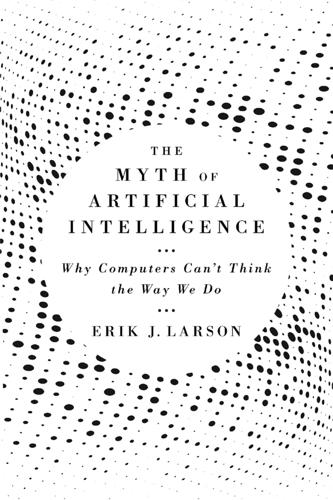
The Myth of Artificial Intelligence: Why Computers Can't Think the Way We Do
by
Erik J. Larson
Published 5 Apr 2021
Abduction in name only is not what I mean by abduction, and the systems using the name but not solving the problem won’t help us make progress in AI. I will explain all this in pages to come. Chapter 1: The Intelligence Error 1. A. M. Turing, “Computing Machinery and Intelligence,” Mind 59, no. 236 (October 1950), 433–460. 2. A. M. Turing, “On Computable Numbers, with an Application to the Entscheidungsproblem,” Proceedings of the London Mathematical Society, vols. 2–42, issue 1 (January 1937), 230–265. 3. A. M. Turing, Systems of Logic Based on Ordinals (PhD diss., Princeton University, 1938), 57. 4. Gödel also showed that adding rules would patch up incompleteness in some systems, but that the new system, with the additional rules, would have yet other blind spots, on and on.

Life After Google: The Fall of Big Data and the Rise of the Blockchain Economy
by
George Gilder
Published 16 Jul 2018
Blockchain Revolution: How the Technology behind Bitcoin is Changing Money, Business, and the World (New York: Penguin Random House, 2016). Tegmark, Max. Life 3.0: Being Human in the Age of Artificial Intelligence (New York: Alfred A. Knopf, 2017). Turner, Fred. Burning Man at Google: A Cultural Infrastructure for New Media Production (Sage Journal, 2009). Turing, Alan. “On Computable Numbers, With An Application to the Entscheidungsproblem” (Princeton: Princeton Graduate Press, 1936). Turing, Alan. Systems of Logic, edited and introduced by Andrew W. Appel (Princeton, NJ: Princeton University Press, 2012). Vigna, Paul and Michael J. Casey, The Age of Cryptocurrency: How Bitcoin and Digital Money are Challenging the Global Economic Order (New York: St.

The Rationalist's Guide to the Galaxy: Superintelligent AI and the Geeks Who Are Trying to Save Humanity's Future
by
Tom Chivers
Published 12 Jun 2019
Müller, ‘Future progress in artificial intelligence: A survey of expert opinion’, Fundamental Issues of Artificial Intelligence, 2016 https://nickbostrom.com/papers/survey.pdf 11. Nick Bostrom, ‘How long before superintelligence?’, International Journal of Future Studies, vol. 2 1998 https://nickbostrom.com/superintelligence.html 4: A history of AI 1. Alan Turing, ‘On computable numbers, with an application to the Entscheidungsproblem’, Proceedings of the London Mathematical Society, vol. s2-42, issue 1, 1 January 1937, pp. 230–265 https://doi.org/10.1112/plms/s2-42.1.230 2. J. McCarthy, M. Minsky, N. Rochester and C.E. Shannon, ‘A proposal for the Dartmouth summer research project on artificial intelligence’, 2 September 1956.
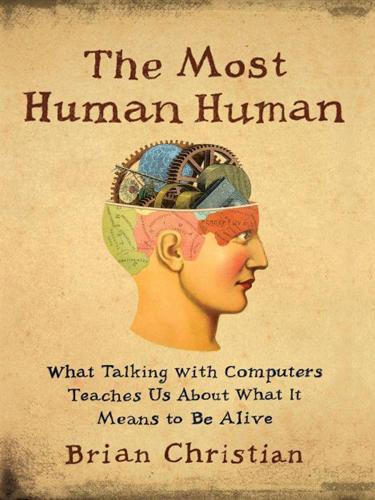
The Most Human Human: What Talking With Computers Teaches Us About What It Means to Be Alive
by
Brian Christian
Published 1 Mar 2011
Hofstadter, Gödel, Escher, Bach: An Eternal Golden Braid (New York: Basic Books, 1979). 8 Mark Humphrys, “How My Program Passed the Turing Test,” in Parsing the Turing Test, edited by Robert Epstein et al. (New York: Springer, 2008). 9 V. S. Ramachandran and Sandra Blakeslee, Phantoms in the Brain: Probing the Mysteries of the Human Mind (New York: William Morrow, 1998). 10 Alan Turing, “On Computable Numbers, with an Application to the Entscheidungsproblem,” Proceedings of the London Mathematical Society, 1937, 2nd ser., 42, no. 1 (1937), pp. 230–65. 11 Ada Lovelace’s remarks come from her translation (and notes thereupon) of Luigi Federico Menabrea’s “Sketch of the Analytical Engine Invented by Charles Babbage, Esq.,” in Scientific Memoirs, edited by Richard Taylor (London, 1843). 12 Alan Turing, “Computing Machinery and Intelligence,” Mind 59, no. 236 (October 1950), pp. 433–60. 13 For more on the idea of “radical choice,” see, e.g., Sartre, “Existentialism Is a Humanism,” especially Sartre’s discussion of a painter wondering “what painting ought he to make” and a student who came to ask Sartre’s advice about an ethical dilemma. 14 Aristotle’s arguments: See, e.g., The Nicomachean Ethics. 15 For a publicly traded company: Nobel Prize winner, and (says the Economist) “the most influential economist of the second half of the 20th century,” Milton Friedman wrote a piece in the New York Times Magazine in 1970 titled “The Social Responsibility of Business Is to Increase Its Profits.”

The Cultural Logic of Computation
by
David Golumbia
Published 31 Mar 2009
Philadelphia, PA: University of Pennsylvania Press. Taylor, R. Gregory. 1998. Models of Computation and Formal Languages. New York: Oxford University Press. Trippi, Joe. 2004. The Revolution Will Not Be Televised: Democracy, the Internet, and the Overthrow of Everything. New York: Regan Books. Turing, Alan. 1936. “On Computable Numbers, with an Application to the Entscheidungsproblem.” Proceedings of the London Mathematical Society, Series 2, Volume 42 (1936–37), 230–265. ———. 1937. “Computability and λ-Definability.” The Journal of Symbolic Logic 2, 153–163. ———. 1950. “Computing Machinery and Intelligence.” Mind: A Quarterly Review of Psychology and Philosophy 59, Number 236 (October), 433–460.

The Secrets of Station X: How the Bletchley Park codebreakers helped win the war
by
Michael Smith
Published 30 Oct 2011
Max Newman, one of the mathematicians working in the Testery, was a thin, bald academic from Manchester University, who like Tutte had worked in Tiltman’s research section. He had been Turing’s tutor at one stage. It was Newman’s suggestion that machines might be able to prove mathematical statements that had led Turing to write his ground-breaking paper ‘On Computable Numbers, with an Application to the Entscheidungsproblem’, and Newman who had ensured that it was published. Newman became convinced that, using similar principles to those advocated by Turing, it would be possible to build a machine that, once the patterns of the wheels had been worked out in the Testery, would find the settings of the first row of wheels, thereby making the codebreakers’ task immeasurably easier.
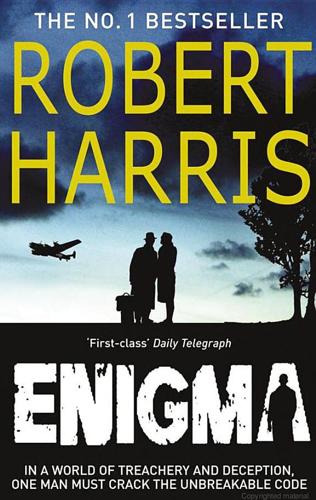
Enigma
by
Robert Harris
Published 15 Feb 2011
The boxes she carried upstairs. One carton was full of books. A couple of Agatha Christies. A Synopsis of Elementary Results in Pure and Applied Mathematics, two volumes, by a fellow named George Shoobridge Garr. Principia Mathematical, whatever that was. A pamphlet with a suspiciously Germanic ring to it—On Computable Numbers, with an Application to the Entscheidungs problem—inscribed 'To Tom, with fond respect, Alan'. More books full of mathematics, one so repeatedly read it was almost falling to pieces and stuffed full of markers—bus and tram tickets, a beer mat, even a blade of grass. It fell open at a heavily underlined passage: there is one purpose at any rate which the real mathematics may serve in war.

Human Compatible: Artificial Intelligence and the Problem of Control
by
Stuart Russell
Published 7 Oct 2019
Whether an object is a general-purpose computer has nothing to do with what it’s made of. 31. Turing’s breakthrough paper defined what is now known as the Turing machine, the basis for modern computer science. The Entscheidungsproblem, or decision problem, in the title is the problem of deciding entailment in first-order logic: Alan Turing, “On computable numbers, with an application to the Entscheidungsproblem,” Proceedings of the London Mathematical Society, 2nd ser., 42 (1936): 230–65. 32. A good survey of research on negative capacitance by one of its inventors: Sayeef Salahuddin, “Review of negative capacitance transistors,” in International Symposium on VLSI Technology, Systems and Application (IEEE Press, 2016). 33.

Genius Makers: The Mavericks Who Brought A. I. To Google, Facebook, and the World
by
Cade Metz
Published 15 Mar 2021
Larry Page and Sergey Brin, DeepMind’s biggest supporters, announced they were retiring: Jack Nicas and Daisuke Wakabayashi, “Era Ends for Google as Founders Step Aside from a Pillar of Tech,” New York Times, December 3, 2019, https://www.nytimes.com/2019/12/03/technology/google-alphabet-ceo-larry-page-sundar-pichai.html. CHAPTER 21: X FACTOR “When I was an undergrad at King’s College Cambridge”: Geoff Hinton, tweet, March 27, 2019, https://twitter.com/geoffreyhinton/status/1110962177903640582?s=19. This was the paper that helped launch the computer age: A. M. Turing, “Article Navigation on Computable Numbers, with an Application to the Entscheidungsproblem,” Proceedings of the London Mathematical Society, vol.s2-42, issue 1 (1937), pp. 230–265. built face recognition technology that could help track: Paul Mozur, “One Month, 500,000 Face Scans: How China Is Using AI to Profile a Minority,” New York Times, April 14, 2019, https://www.nytimes.com/2019/04/14/technology/china-surveillance-artificial-intelligence-racial-profiling.html.

Silence on the Wire: A Field Guide to Passive Reconnaissance and Indirect Attacks
by
Michal Zalewski
Published 4 Apr 2005
Bibliographic Notes Chapter 1 [41] [42] [43] [44] [45] [46] [47] [48] [49] [50] [51] Chapter 2 [52] [53] [54] [55] [56] Chapter 3 [57] [58] [59] Chapter 5 [60] [61] [62] [63] [64] [65] Chapter 6 [66] [67] Chapter 7 [68] [69] Chapter 8 [70] [71] [72] [73] Chapter 9 [74] [75] [76] [77] [78] [79] [80] [81] [82] [83] [84] [85] Chapter 10 [86] [87] [88] Chapter 11 [89] [90] [91] [92] [93] [94] [95] Chapter 13 [96] Chapter 14 [97] [98] [99] [100] [101] [102] [103] [104] [105] Chapter 15 [106] [107] Chapter 16 [108] [109] Chapter 17 [110] [111] [112] Chapter 18 [113] [114] [115] * * * [41] Alan Turing, “On Computable Numbers, with an Application to the Entscheidungsproblem,” Proceedings of the London Mathematical Society, Series 2, 42 (1936). [42] R.L. Rivest, A. Shamir, L. Adleman, “A Method for Obtaining Digital Signatures and Public-Key Cryptosystems,” Massachusetts Institute of Technology (1978). [43] Ueli M. Maurer, “Fast Generation of Prime Numbers and Secure Public-Key Cryptographic Parameters,” Institute for Theoretical Computer Science, ETH Zurich, Switzerland (1994)
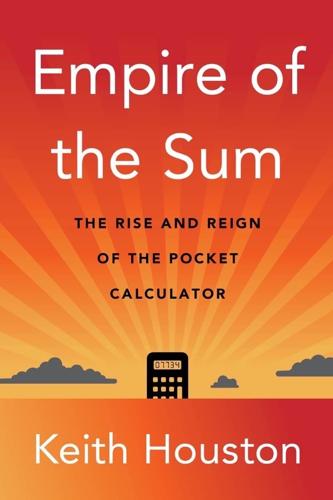
Empire of the Sum: The Rise and Reign of the Pocket Calculator
by
Keith Houston
Published 22 Aug 2023
Arthur Tatnall and Christopher Leslie (Cham: Springer, 2016), 186–192. 6. the friden stw-10 1 Erwin Danneels, “Trying to Become a Different Type of Company: Dynamic Capability at Smith Corona,” Strategic Management Journal 32, no. 1 (January 1, 2011): 1–31, https://doi.org/10.1002/smj.863; “Company History” (Unisys), accessed May 28, 2021, https://www.unisys.com/aboutus/company-history; Frank Stephen Baldwin, “An Interview with the Father of the Calculating Machine” (Monroe Calculating Machine Company, 1919). 2 Martin, Kidwell, and Williams, The Calculating Machines, 23. 3 Robert Lewis, “Bletchley Park,” Encyclopaedia Britannica, 2016, https://www.britannica.com/place/Bletchley-Park; Andrew Hodges, “Turing, Alan Mathison (1912–1954), Mathematician and Computer Scientist,” Oxford Dictionary of National Biography, 2017, https://doi.org/10.1093/ref:odnb/36578. 4 Alan M. Turing, “On Computable Numbers, with an Application to the Entscheidungsproblem,” Proceedings of the London Mathematical Society s2-42, no. 1 (1937): 230–265, https://doi.org/10.1112/plms/s2-42.1.230; Alan M. Turing, “Computing Machinery and Intelligence,” Mind LIX, no. 236 (1950): 433–460, https://doi.org/10.1093/mind/LIX.236.433. 5 Roland Pease, “Alan Turing: Inquest’s Suicide Verdict ‘Not Supportable,’ ” BBC News, June 26, 2012, https://www.bbc.co.uk/news/science-environment-18561092; “Royal Pardon for Codebreaker Alan Turing,” BBC News, December 24, 2013, https://www.bbc.co.uk/news/technology-25495315. 6 Turing, “Computing Machinery and Intelligence,” 436–437. 7 Menninger, Number Words, 212, 306. 8 Heinrich Schreiber, Ayn New Kunstlich Buech, Welches Gar Gewiß Vnd Behend Lernet Nach Der Gemainen Regel Detre, Welschen Practic, Regeln Falsi vñ Etlichē Regeln Cosse Mancherlay Schöne Uñ Zu Wissen Notürfftig Rechnu~g Auff Kauffmanschafft . . .

Darwin Among the Machines
by
George Dyson
Published 28 Mar 2012
CHAPTER 4 1.Alan Turing, “Computing Machinery and Intelligence,” Mind 59 (October 1950): 443. 2.A. K. Dewdney, The Turing Omnibus (Rockville, Md.: Computer Science Press, 1989), 389. 3.Robin Gandy, “The Confluence of Ideas in 1936,” in Rolf Herken, ed., The Universal Turing Machine: A Half-century Survey (Oxford: Oxford University Press, 1988), 85. 4.Alan Turing, “On Computable Numbers, with an Application to the Entscheidungsproblem,” Proceedings of the London Mathematical Society, 2d ser. 42 (1936–1937); reprinted, with corrections, in Martin Davis, ed., The Undecidable (Hewlett, N.Y.: Raven Press, 1965), 117. 5.Ibid., 136. 6.Kurt Gödel, 1946, “Remarks Before the Princeton Bicentennial Conference on Problems in Mathematics,” reprinted in Davis, The Undecidable, 84. 7.W.

What to Think About Machines That Think: Today's Leading Thinkers on the Age of Machine Intelligence
by
John Brockman
Published 5 Oct 2015
Chesterton, Heretics (New York: John Lane, 1905). 6. I. J. Good, “Speculation Concerning the First Ultraintelligent Machine,” Advances in Computers, vol. 6, 1965. 7. Kevin Kelly, “The Technium,” Edge, entry February 3, 2014, https://edge.org/conversation/the-technium [accessed July 21, 2015]. 8. Alan Turing, “On Computable Numbers, with an Application to the Entscheidungsproblem,” Proc. Lond. Math. Soc. 42, series 2 (1936–7): 230–65. 9. Steven Pinker, comment on “The Myth of AI,” Edge, entry November 14, 2014, http://edge.org/conversation/the-myth-of-ai#25987 [accessed July 21, 2015]. 10. Hannah Arendt, The Life of the Mind, vol. 1 (New York: Harcourt Brace, 1978). 11.
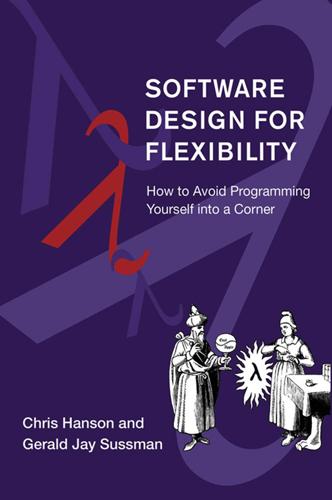
Software Design for Flexibility
by
Chris Hanson
and
Gerald Sussman
Published 17 Feb 2021
Cambridge, MA: MIT Press, 2001/2014. [122]Gerald Jay Sussman and Jack Wisdom with Will Farr; Functional Differential Geometry. Cambridge, MA: MIT Press, 2013. [123]The TTL Data Book for Design Engineers, by the Engineering Staff of Texas Instruments Incorporated, Semiconductor Group. [124]Alan M. Turing; “On Computable Numbers, with an Application to the Entscheidungsproblem,” in Proceedings of the London Mathematical Society (Series 2), 42 (1936): 230–265. [125]David L. Waltz; Generating Semantic Descriptions From Drawings of Scenes With Shadows, PhD thesis, MIT, also Artificial Intelligence Laboratory Technical Report 271, November 1972. http://hdl.handle.net/1721.1/6911 [126]Stephen A.

The Long History of the Future: Why Tomorrow's Technology Still Isn't Here
by
Nicole Kobie
Published 3 Jul 2024
You Look Like a Thing and I Love You: How Artificial Intelligence Works and Why It’s Making the World a Weirder Place. London: Headline Publishing Group, 2019. Turing, A. M. ‘Computing Machinery and Intelligence.’ Mind, volume LIX, issue 236, October 1950, pp. 433–460. https://doi.org/10.1093/mind/LIX.236.433 Turing, A. M. ‘On Computable Numbers, with an Application to the Entscheidungsproblem.’ Proceedings of the London Mathematical Society, volume s2-42, issue 1, 1937, pp. 230–265. https://doi.org/10.1112/plms/s2-42.1.230 Wooldridge, Michael. The Road to Conscious Machines: The Story of AI. London: Pelican, 2021. Robots Ackerman, Evan.

Between Human and Machine: Feedback, Control, and Computing Before Cybernetics
by
David A. Mindell
Published 10 Oct 2002
Proceedings of the Royal Society of London 24 (1876): 269–71. Tinus, W. C., and W. H. C. Higgins. “Early Fire-Control Radars for Naval Vessels.” Bell System Technical Journal 25 (January 1946): 1–47. Tomayko, James E. “Helmut Hoelzer’s Fully Electronic Analog Computer.” Annals of the History of Computing 7 (1985): 227–40. Turing, Alan. “On Computable Numbers, with an Application to the Entscheidungsproblem.” Proceedings of the London Mathematical Society 2, no. 42 (1937): 230–65. U.S. Naval Academy. Fire Control Installations . United States Naval Academy, Postgraduate School, Pub. no. 105. Annapolis, Md., [ca. 1940]. ———. Notes on Fire Control . Washington, D.C.: U.S.
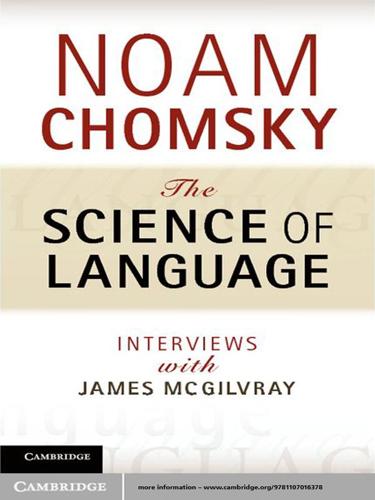
The Science of Language
by
Noam Chomsky
Published 24 Feb 2012
Tomalin, Marcus (2003) “Goodman, Quine, and Chomsky: from a grammatical point of view.” Lingua 113: 1223–1253. Tomalin, Marcus (2006) Linguistics and the Formal Sciences: The Origins of Generative Grammar. Cambridge University Press. Tomalin, Marcus (2007) “Reconsidering Recursion in Linguistic Theory.” Lingua 117: 1784–1800. Turing, Alan (1937) “On Computable Numbers, with an Application to the Entscheidungsproblem.” London Mathematical Society, Series 2 42: 230–265. Turing, Alan (1950) “Computing Machinery and Intelligence.” Mind 59: 433–460. Turing, Alan (1992) Collected Works of Alan Turing: Morphogenesis. Ed. P. T. Saunders. Amsterdam: North Holland. Tversky, Amos and Daniel Kahneman (1974) “Judgment under Uncertainty.”
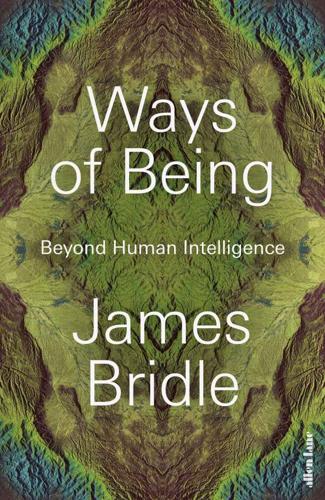
Ways of Being: Beyond Human Intelligence
by
James Bridle
Published 6 Apr 2022
Palfreyman and M. al Khalil, ‘“A Funky Language for Teenzz to Use”: Representing Gulf Arabic in Instant Messaging’, Journal of Computer-Mediated Communication, 9(1), 2003, pp. 23–44. 42. Naomi S. Baron, ‘Why Email Looks Like Speech: Proofreading Pedagogy and Public Face’, in Jean Aitchison and Diana M. Lewis (eds), New Media Language (London: Routledge, 2003), pp. 85–94. 6. NON-BINARY MACHINES 1. Plato, Apology, 21a–d. 2. A. M. Turing, ‘On Computable Numbers, With an Application to the Entscheidungsproblem’ (1936), Proceedings of the London Mathematical Society, Series 2, 42, 1937, pp. 230–65; DOI:10.1112/plms/s2-42.1.230. 3. A. M. Turing, ‘Systems of Logic Based on Ordinals’, Proceedings of the London Mathematical Society, Series 2, 45, 1939, pp. 161–228. 4.
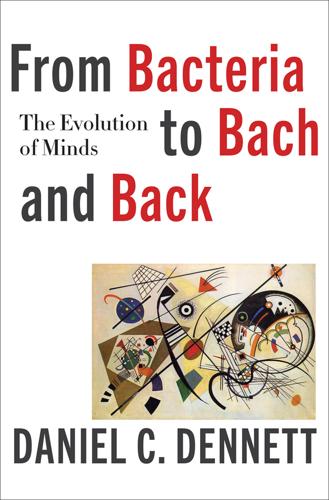
From Bacteria to Bach and Back: The Evolution of Minds
by
Daniel C. Dennett
Published 7 Feb 2017
A Natural History of Human Thinking. Cambridge: Harvard University Press. Tononi G. 2008. “Consciousness as Integrated Information: A Provisional Manifesto.” Biological Bulletin 215 (3): 216–42. Trivers, Robert. 1985. Social Evolution. Menlo Park, Calif.: Benjamin/Cummings. Turing, Alan M. 1936. “On Computable Numbers, with an Application to the Entscheidungs Problem.” Journal of Math 58 (345–363): 5. —. 1960. “Computing Machinery and Intelligence.” Mind: 59: 433–460. von Neumann, John, and Oskar Morgenstern. 1953 (©1944). Theory of Games and Economic Behavior. Princeton, N.J.: Princeton University Press. von Uexküll, Jakob. 1934.

The Singularity Is Near: When Humans Transcend Biology
by
Ray Kurzweil
Published 14 Jul 2005
(Cambridge, U.K.: Cambridge University Press, 1910, 1912, 1913). 27. Gödel's incompleteness theorem first appeared in his "Uberformal unenscheiderbare Satze der Principia Mathematica und verwandter Systeme I," Monatshefte für Mathematik und Physik 38 (1931): 173–98. 28. Alan M. Turing, "On Computable Numbers with an Application to the Entscheidungsproblem," Proceedings of the London Mathematical Society 42 (1936): 230-65. The "Entscheidungsproblem" is the decision or halting problem—that is, how to determine ahead of time whether an algorithm will halt (come to a decision) or continue in an infinite loop. 29.
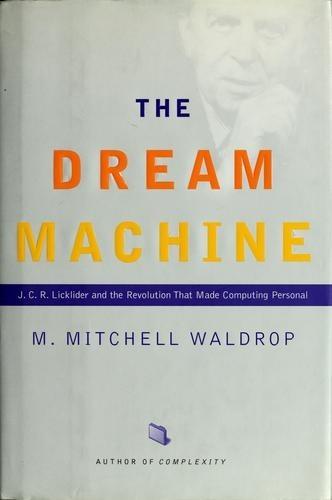
The Dream Machine: J.C.R. Licklider and the Revolution That Made Computing Personal
by
M. Mitchell Waldrop
Published 14 Apr 2001
"A Perspective on SAGE: Discussion." Annals of the H15tory ofComputzng 5 (1983). -. "RelIabilIty of Components (Interview with Jay W. Forrester)." Annals of the H15tory ofComputzng 5 (1983). -. "Origin of the Term Bit." Annals of the History ofComputzng 6 (1984). Turing, Alan M. "On Computable Numbers, with an ApplIcation to the Entschldungsproblem." Pro- ceedzngs of the London Mathematical Soczety 2, no. 42 (1937). -. "Computing Machinery and Intelligence." Mind 59, no. 236 (1950). Reprinted In The Mznd's I: Fantaszes and ReflectIOns on Self & Soul, edited by Douglas R. Hofstadter and Daniel C. Dennett.
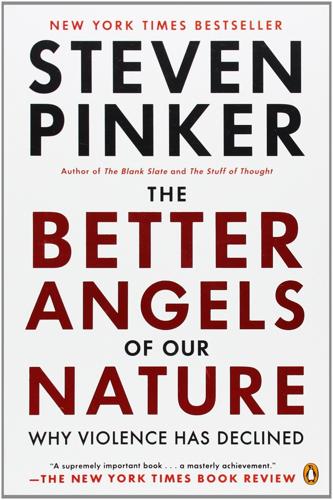
The Better Angels of Our Nature: Why Violence Has Declined
by
Steven Pinker
Published 24 Sep 2012
Natural selection of parental ability to vary the sex ratio of offspring. Science, 179, 90–91. Tuchman, B. W. 1978. A distant mirror: The calamitous 14th century. New York: Knopf. Tucker, G. R. & Lambert, W. E. 1969. White and Negro listeners’ reactions to various American-English dialects. Social Forces, 47, 465–68. Turing, A. M. 1936. On computable numbers, with an application to the Entscheidungsproblem. Proceedings of the London Mathematical Society, 42, 230–65. Turing, A. M. 1950. Computing machinery and intelligence. Mind, 59, 433–60. Turkheimer, E. 2000. Three laws of behavior genetics and what they mean. Current Directions in Psychological Science, 5, 160–64.

Artificial Intelligence: A Modern Approach
by
Stuart Russell
and
Peter Norvig
Published 14 Jul 2019
Exploratory Data Analysis. Addison-Wesley. Tumer, K. and Wolpert, D. (2000). Collective intelligence and Braess’ paradox. In AAAI-00. Turian, J., Ratinov, L., and Bengio, Y. (2010). Word representations: a simple and general method for semi-supervised learning. In ACL-10. Turing, A. (1936). On computable numbers, with an application to the Entscheidungsproblem. Proc. London Mathematical Society, 2nd series, 42, 230–265. Turing, A. (1948). Intelligent machinery. Tech. rep., National Physical Laboratory. reprinted in (Ince, 1992). Turing, A. (1950). Computing machinery and intelligence. Mind, 59, 433–460. Turing, A., Strachey, C., Bates, M.